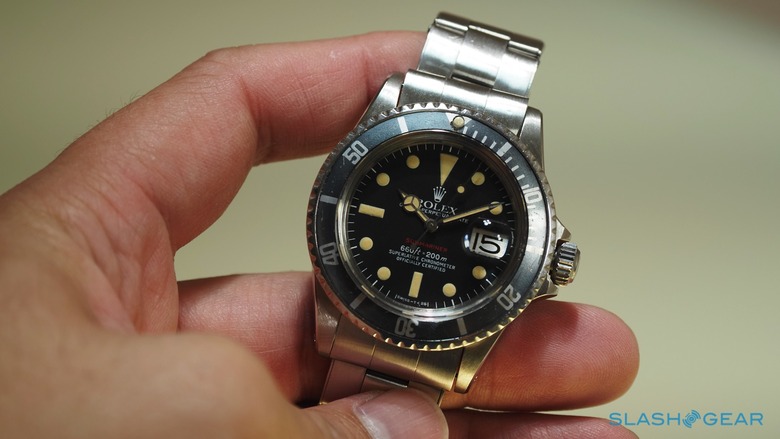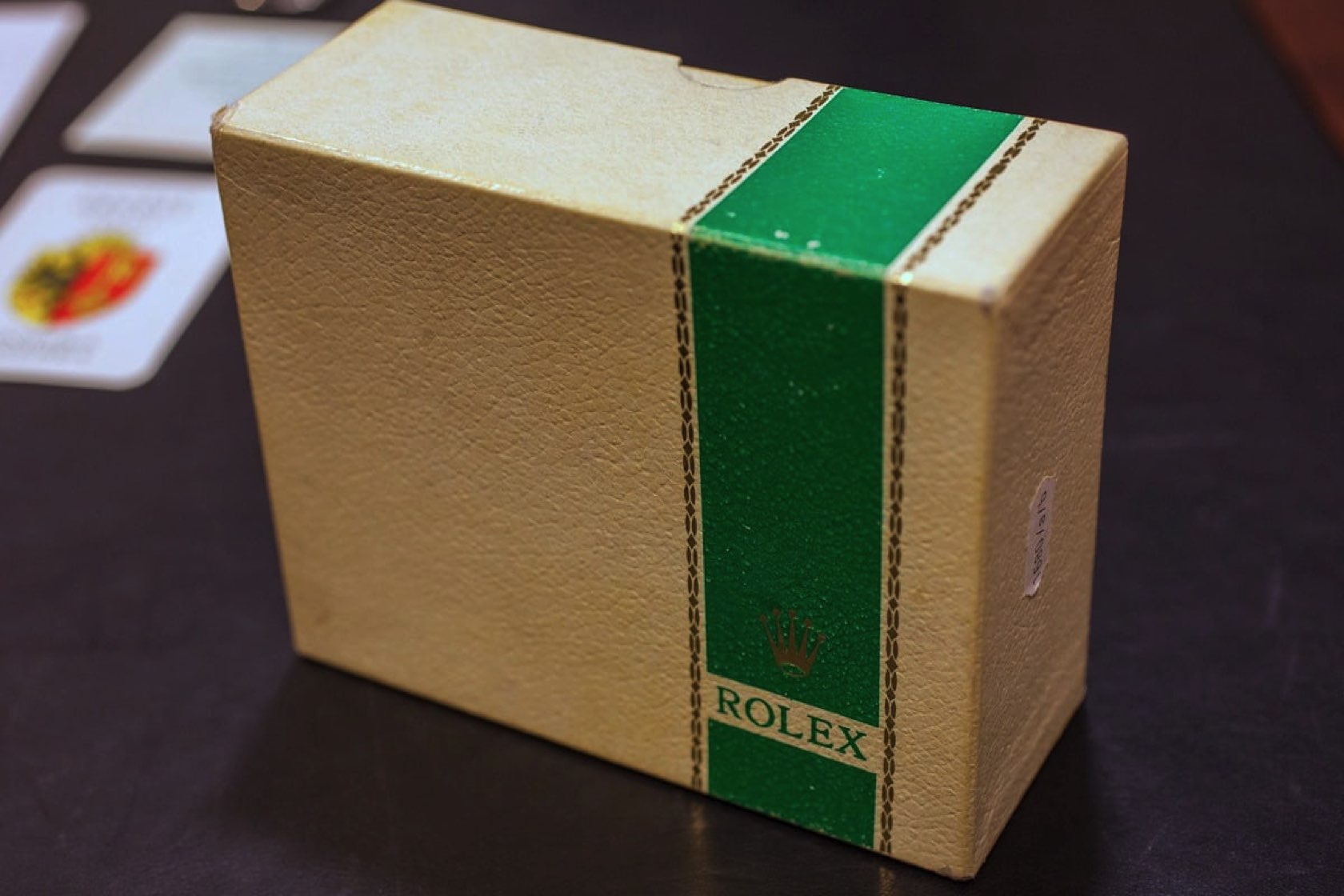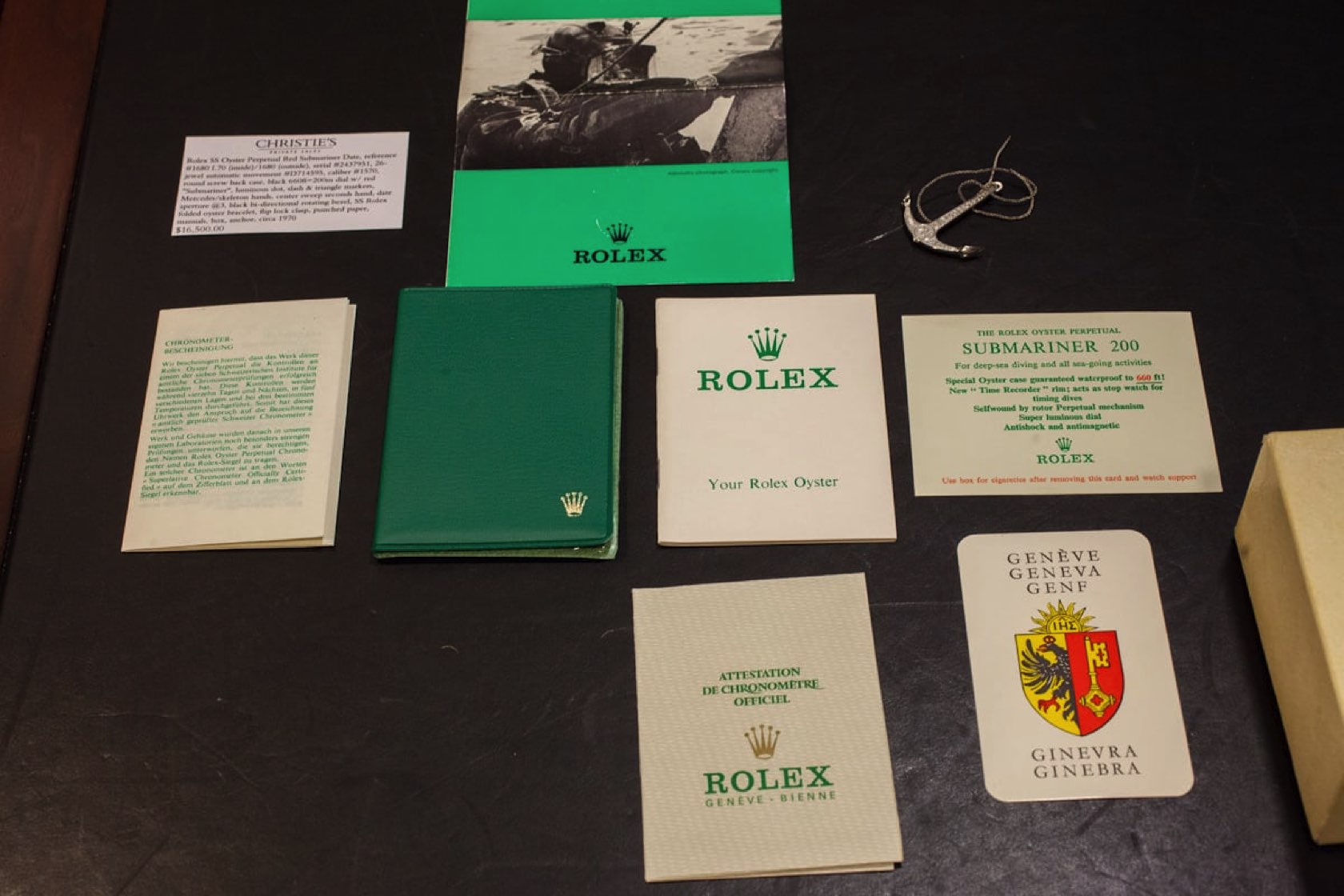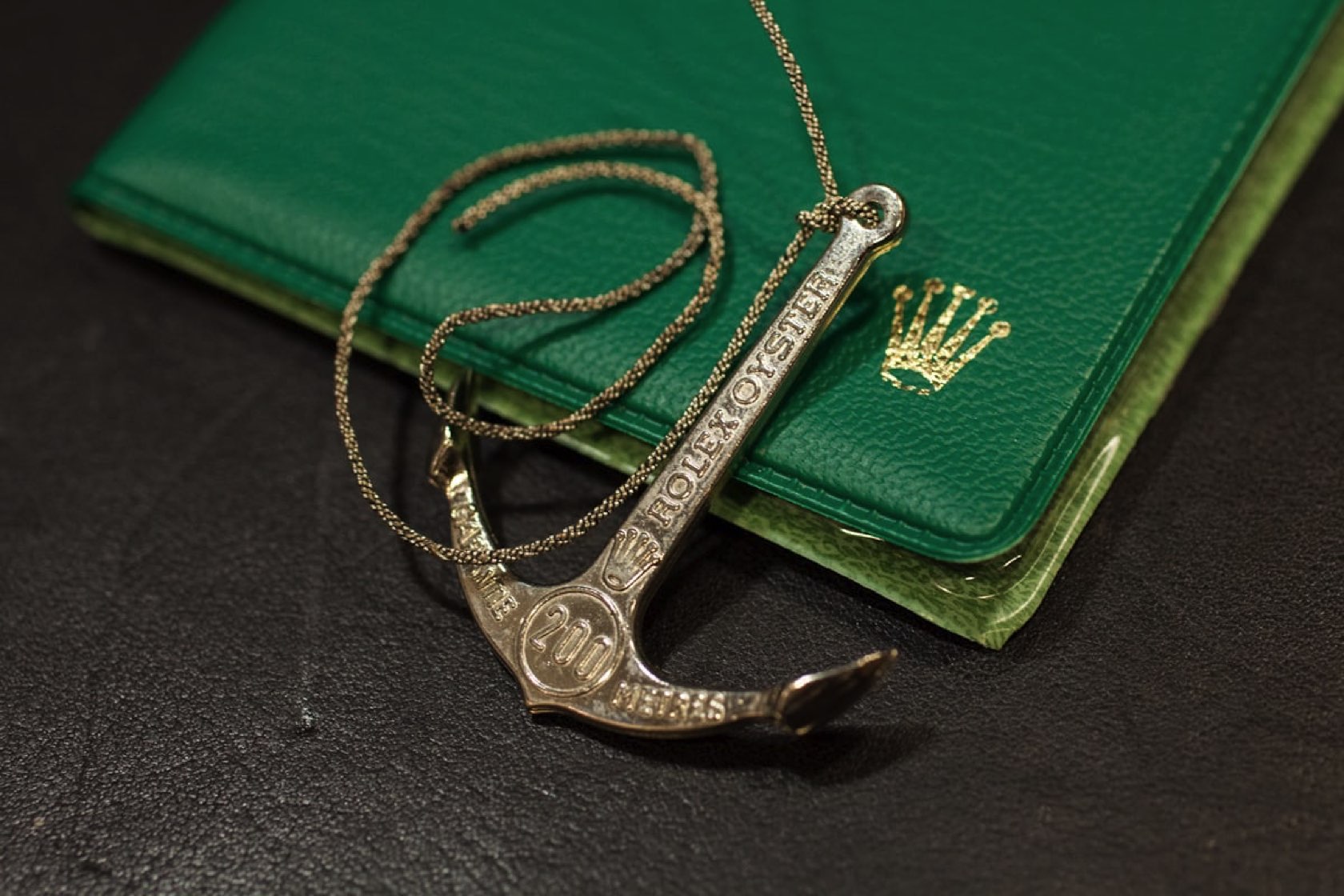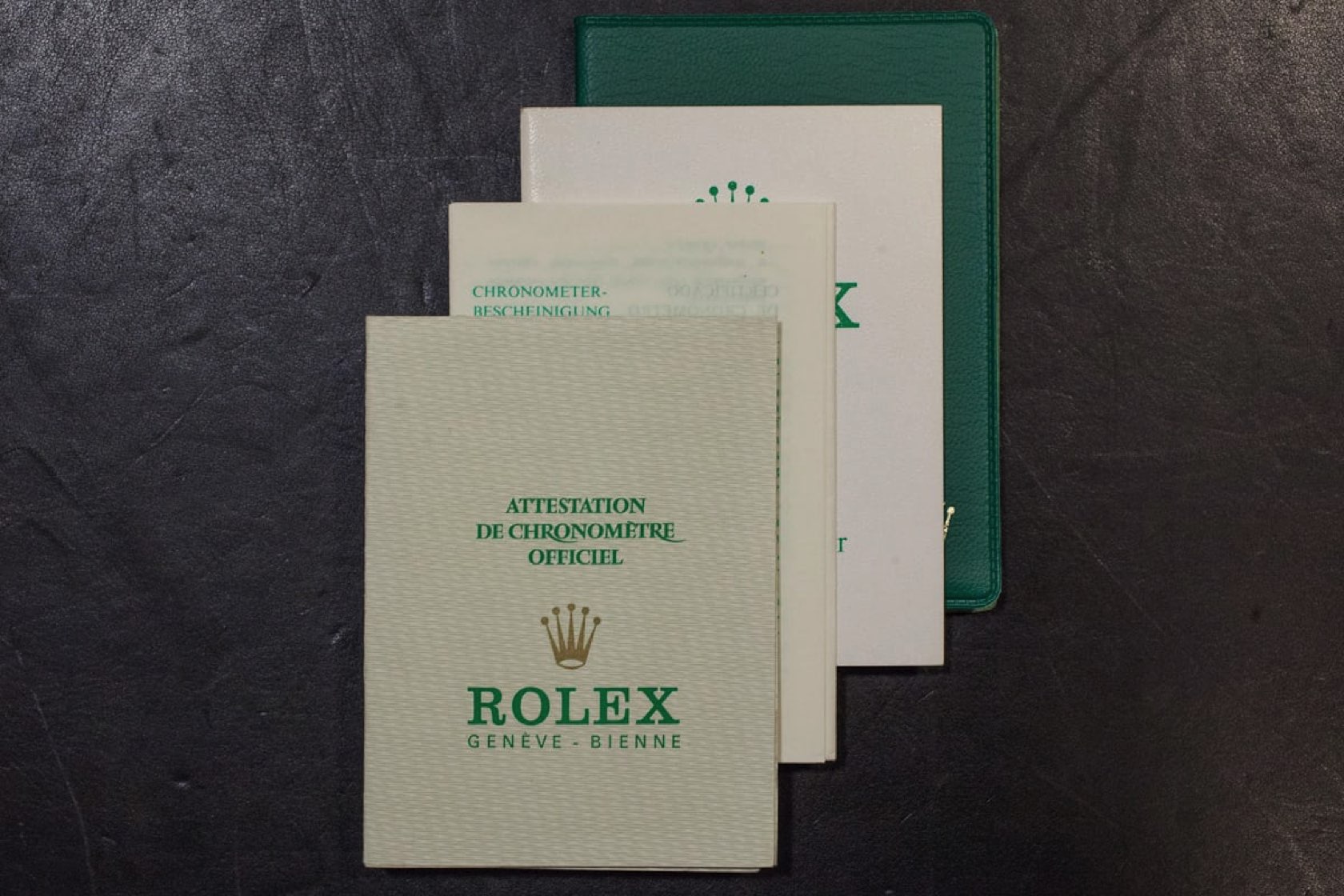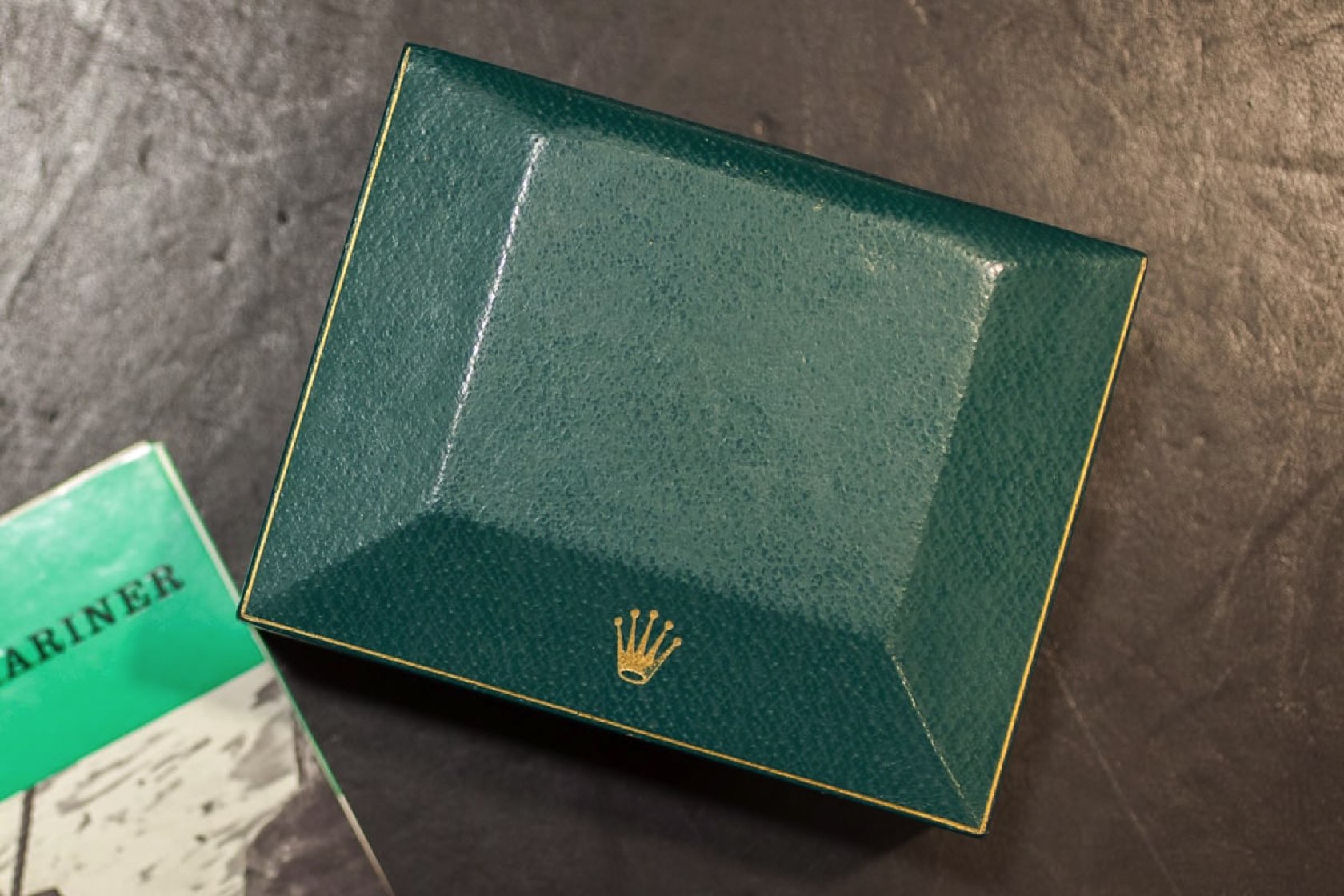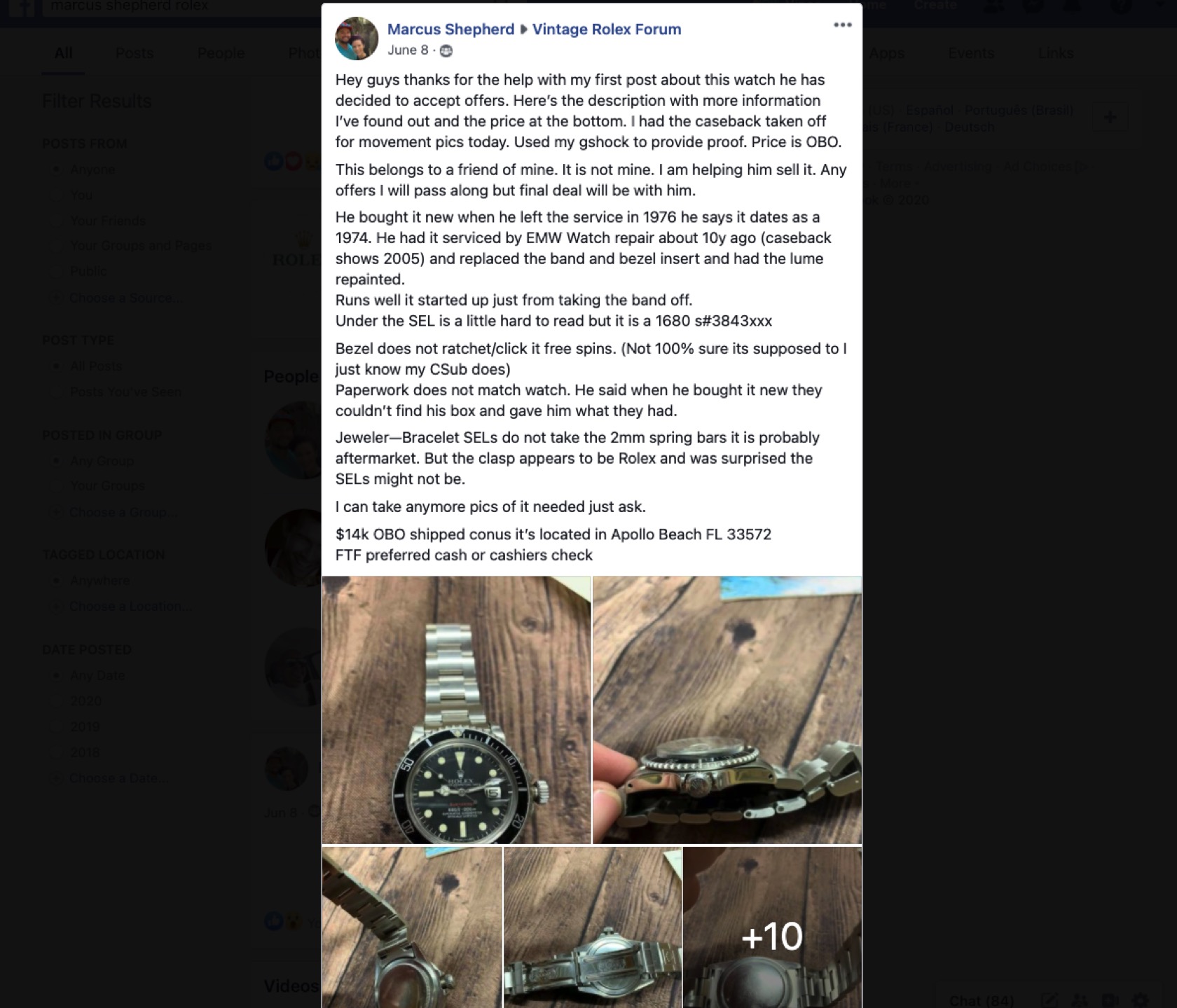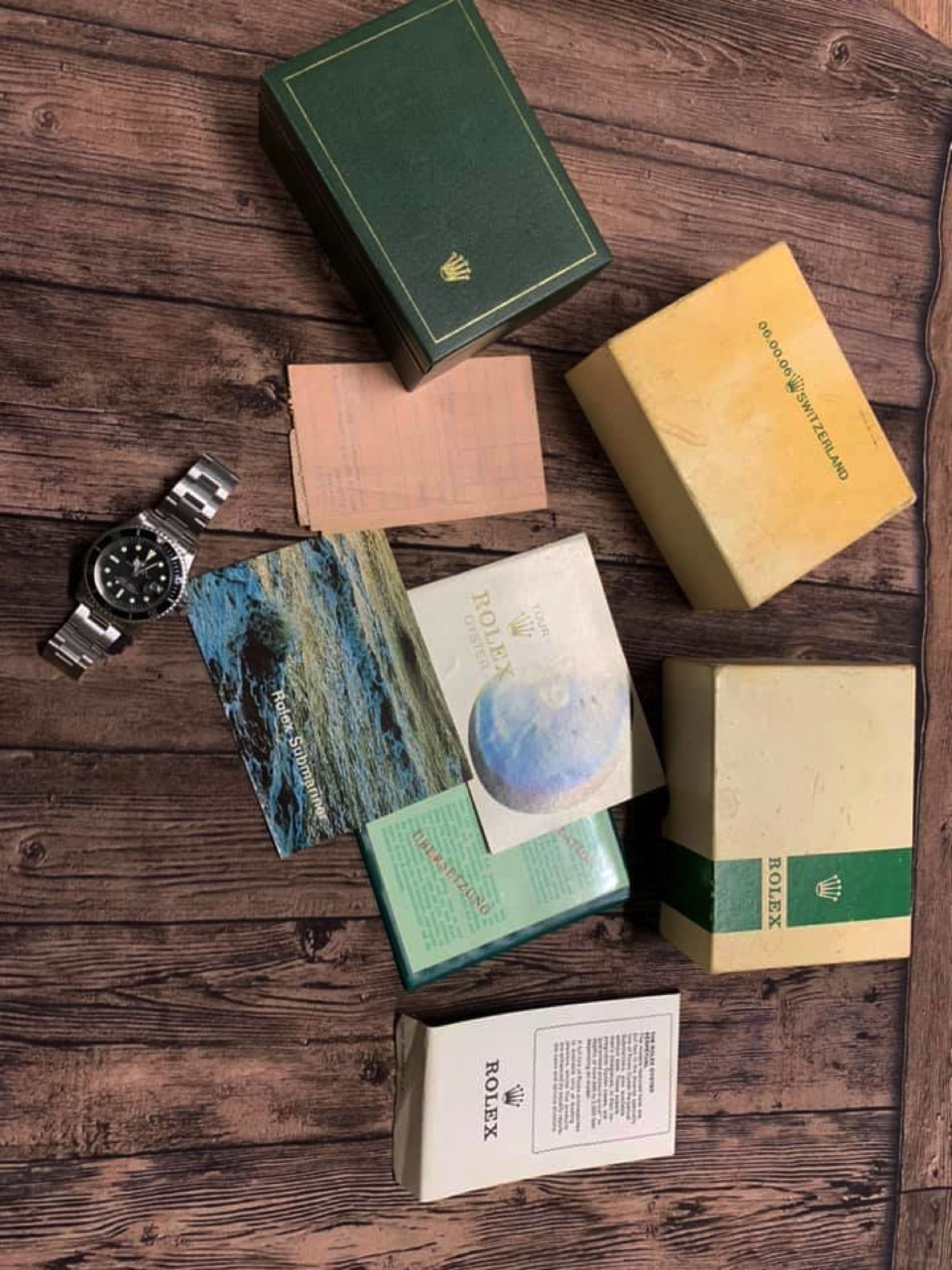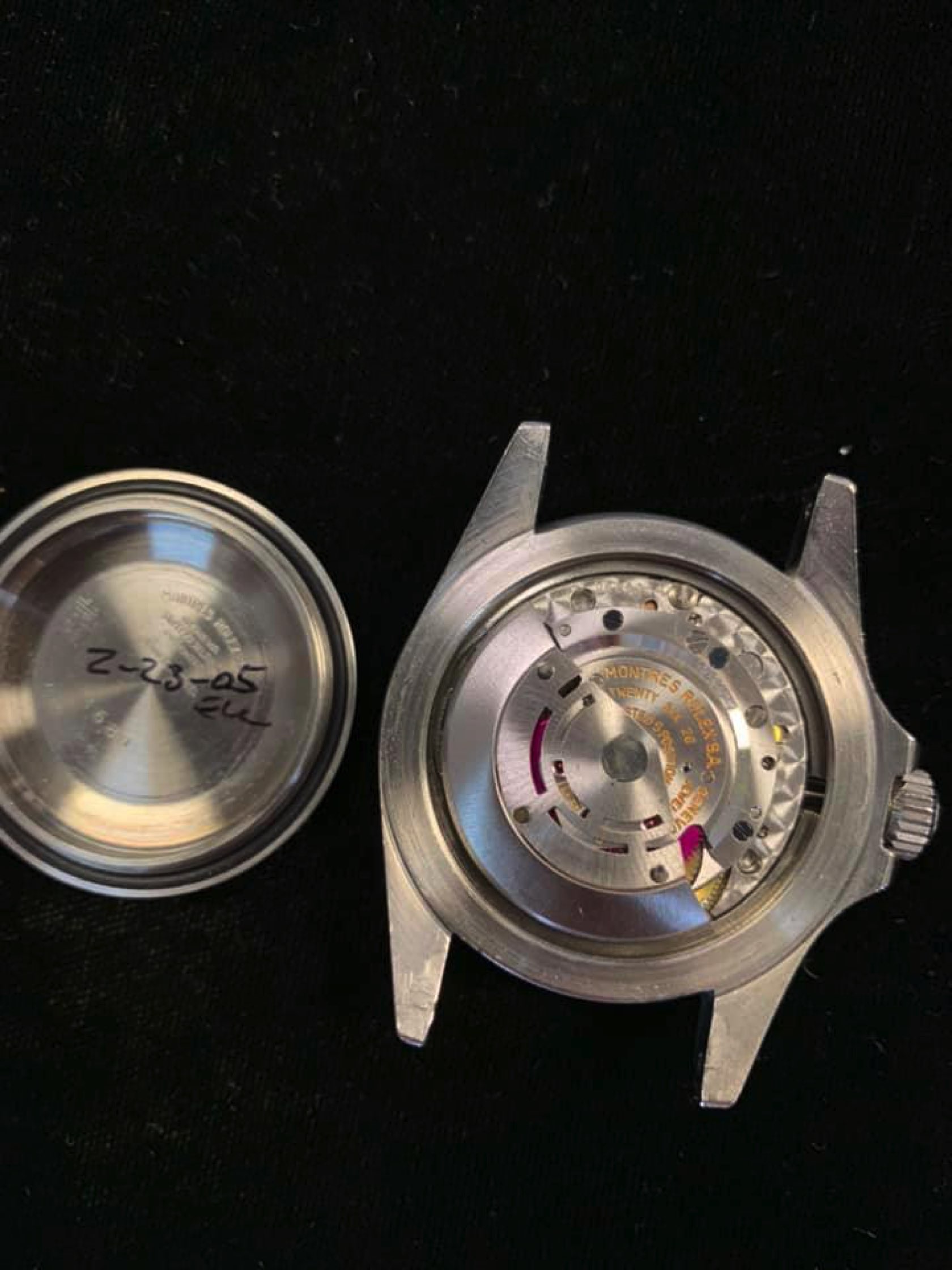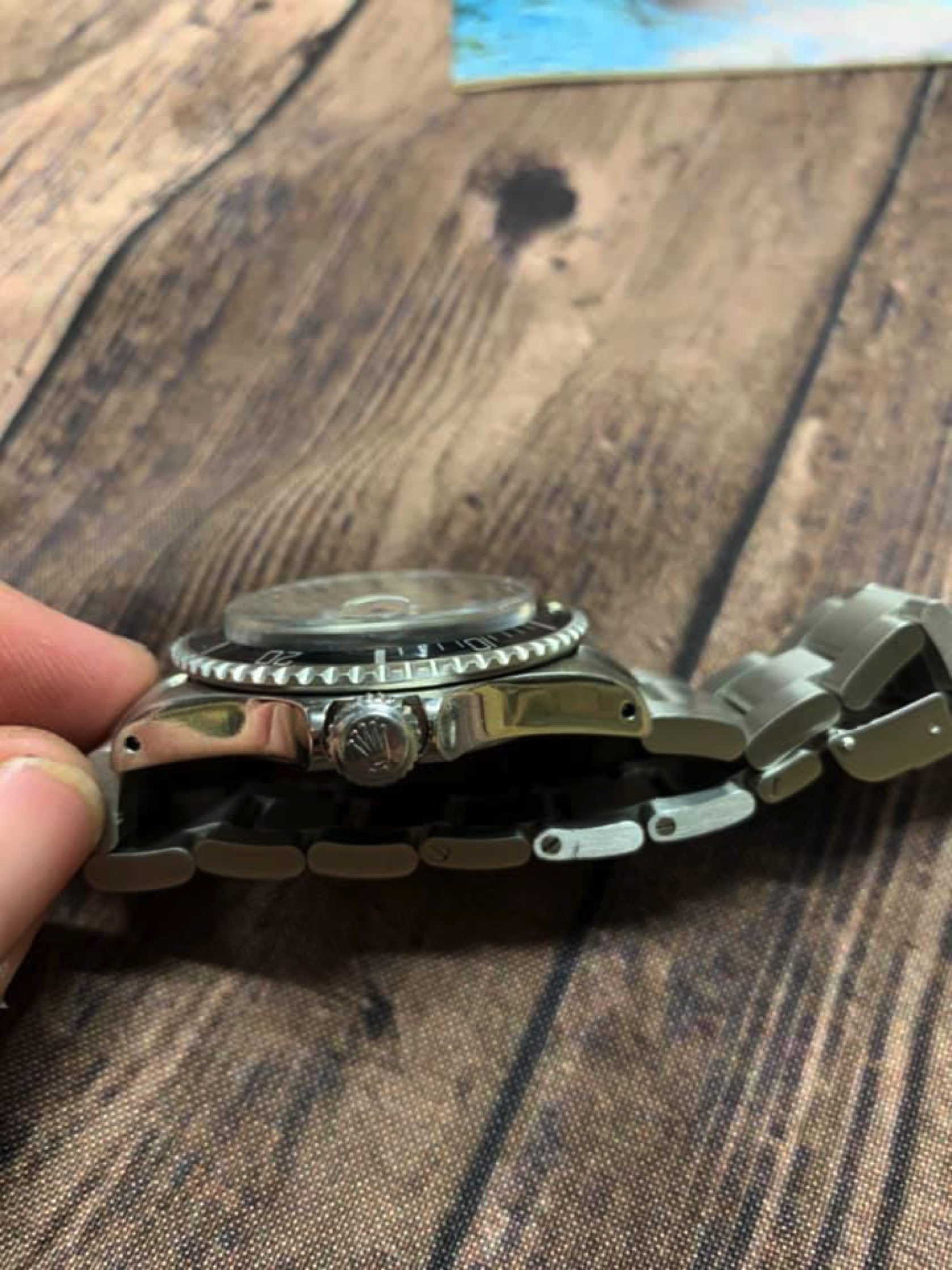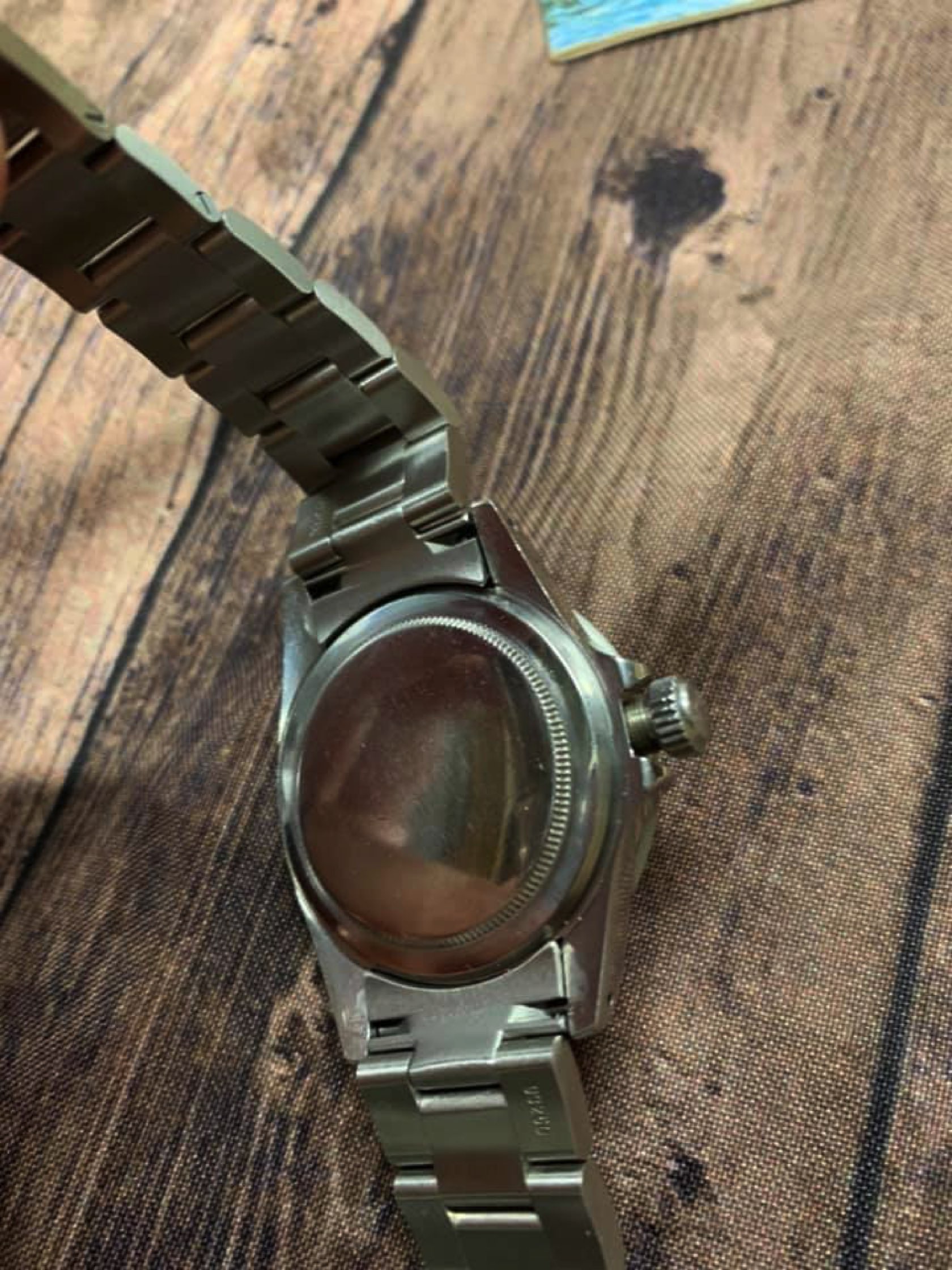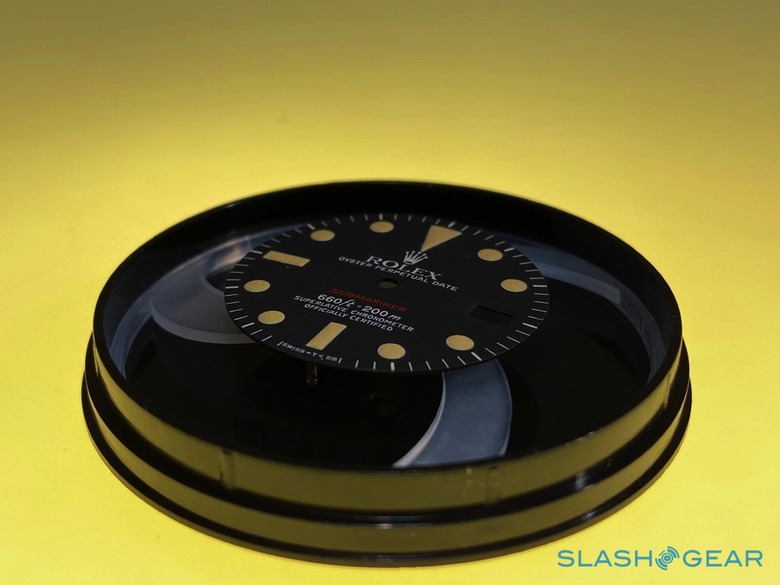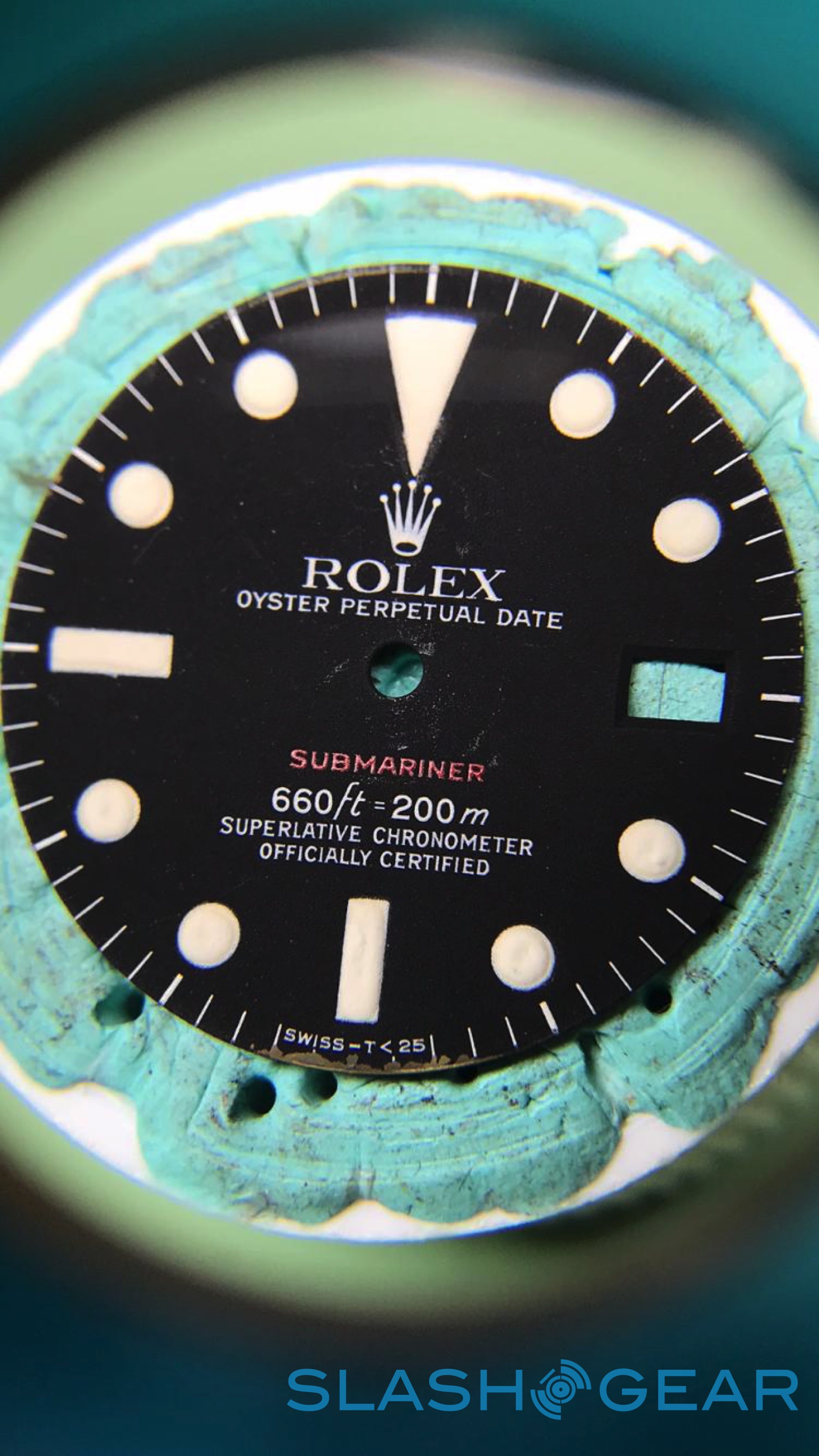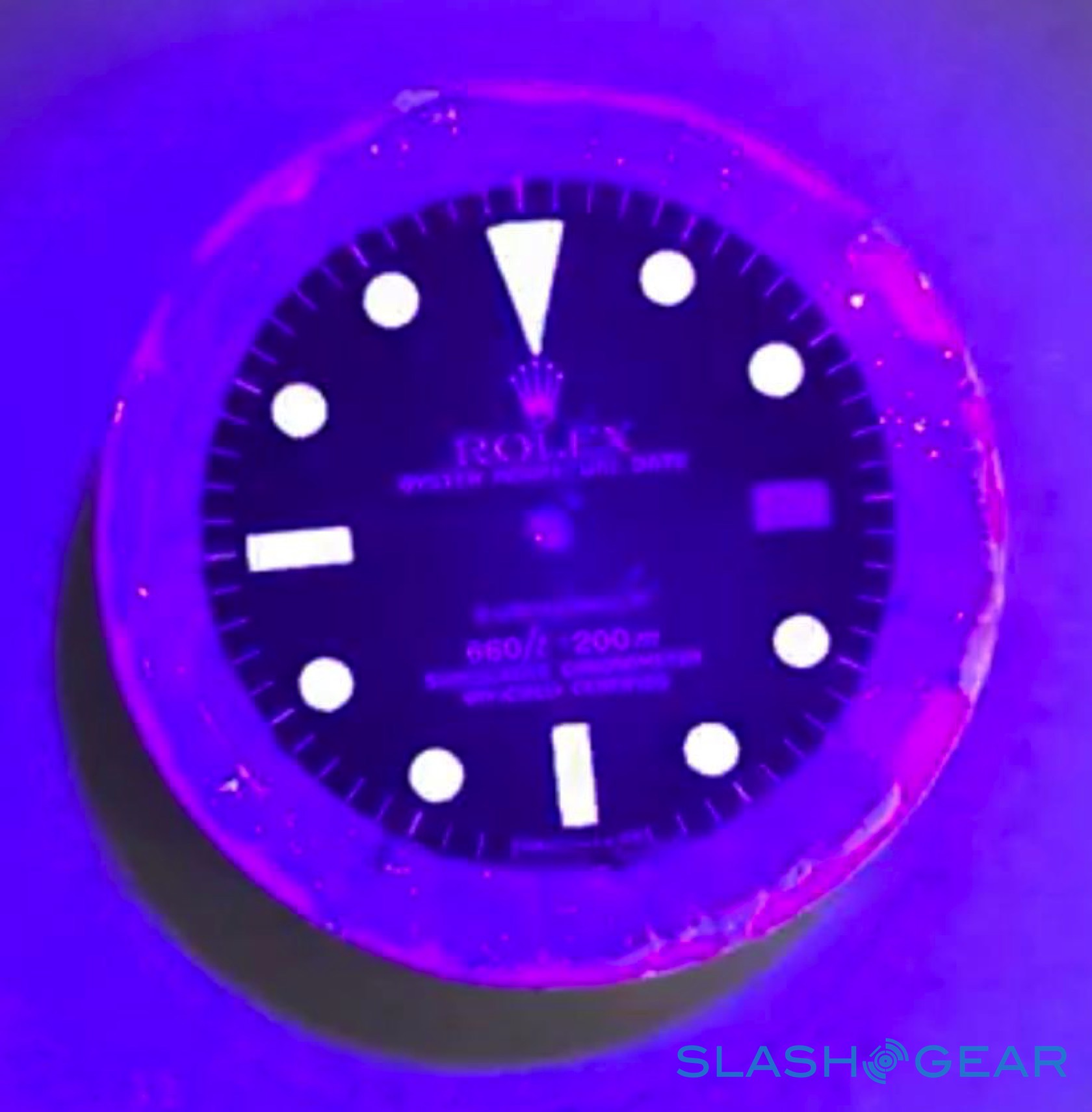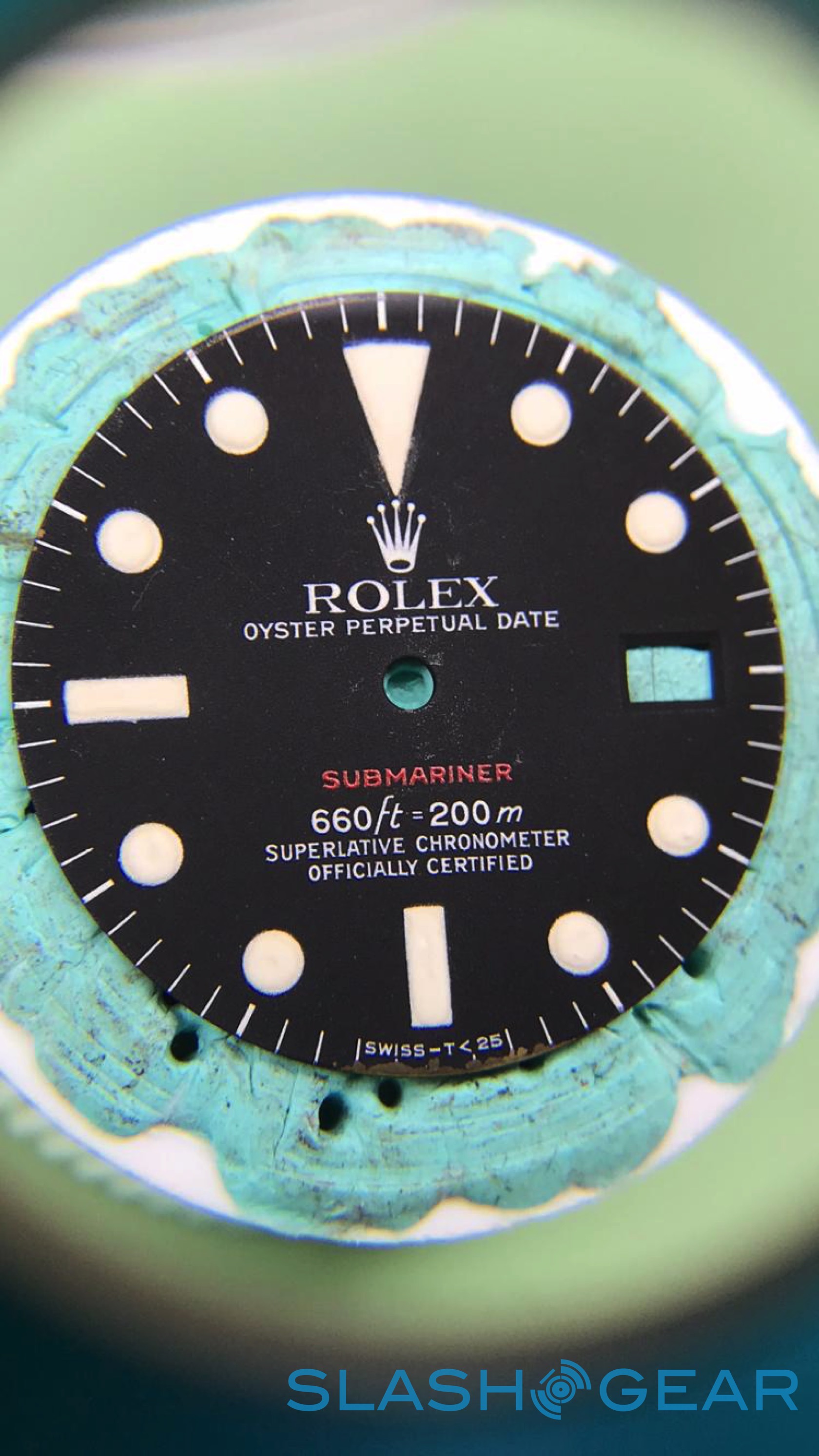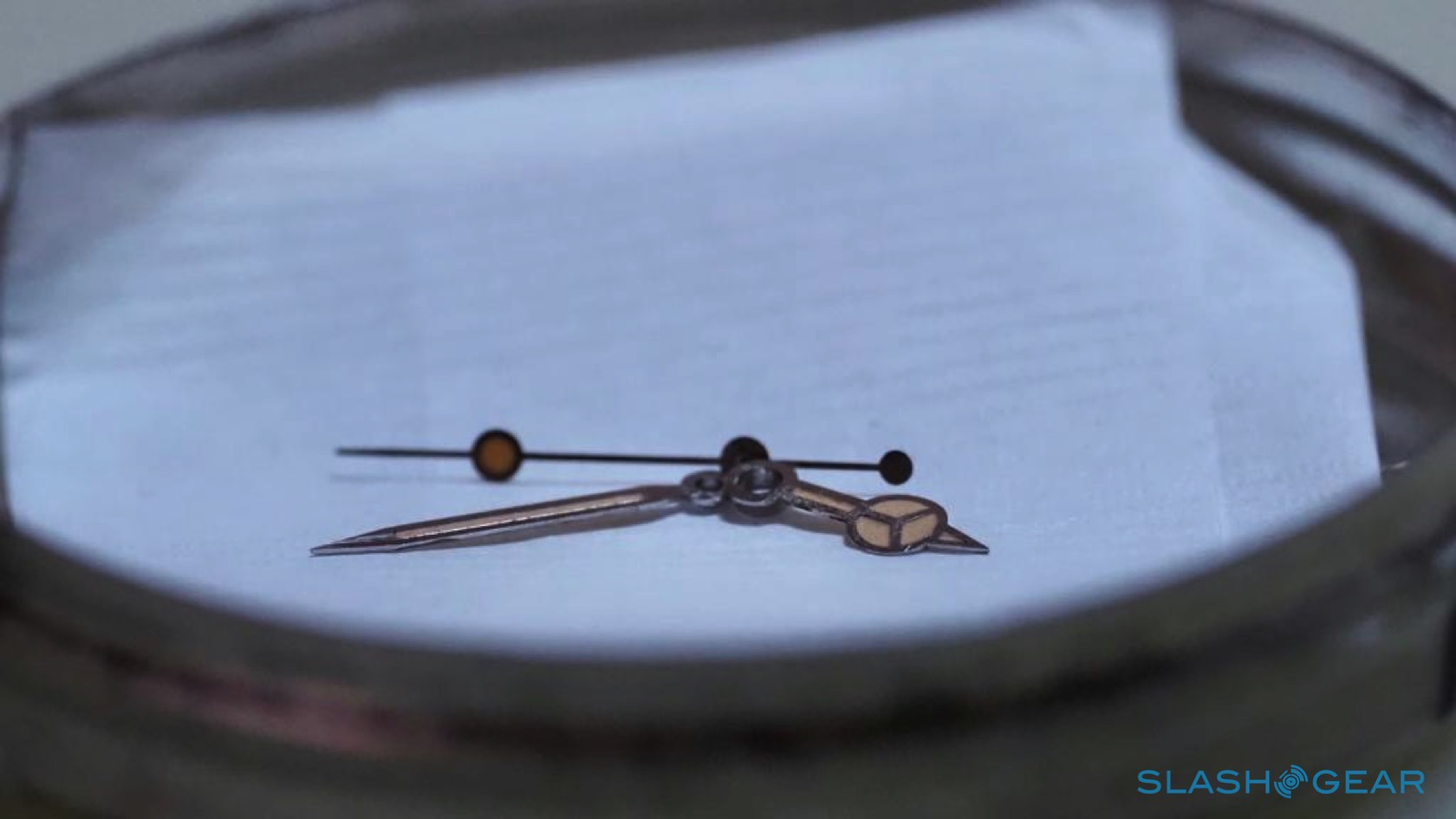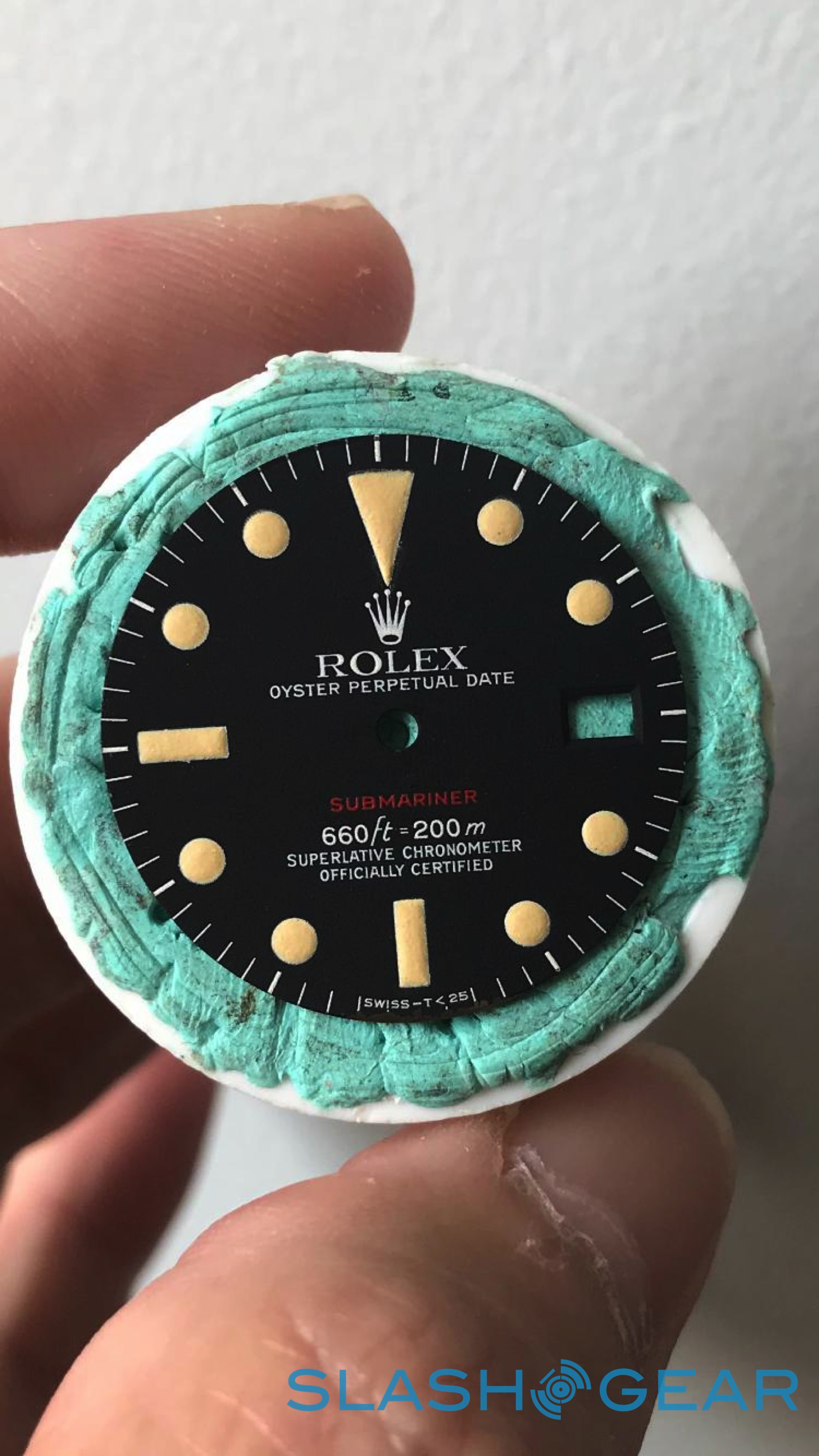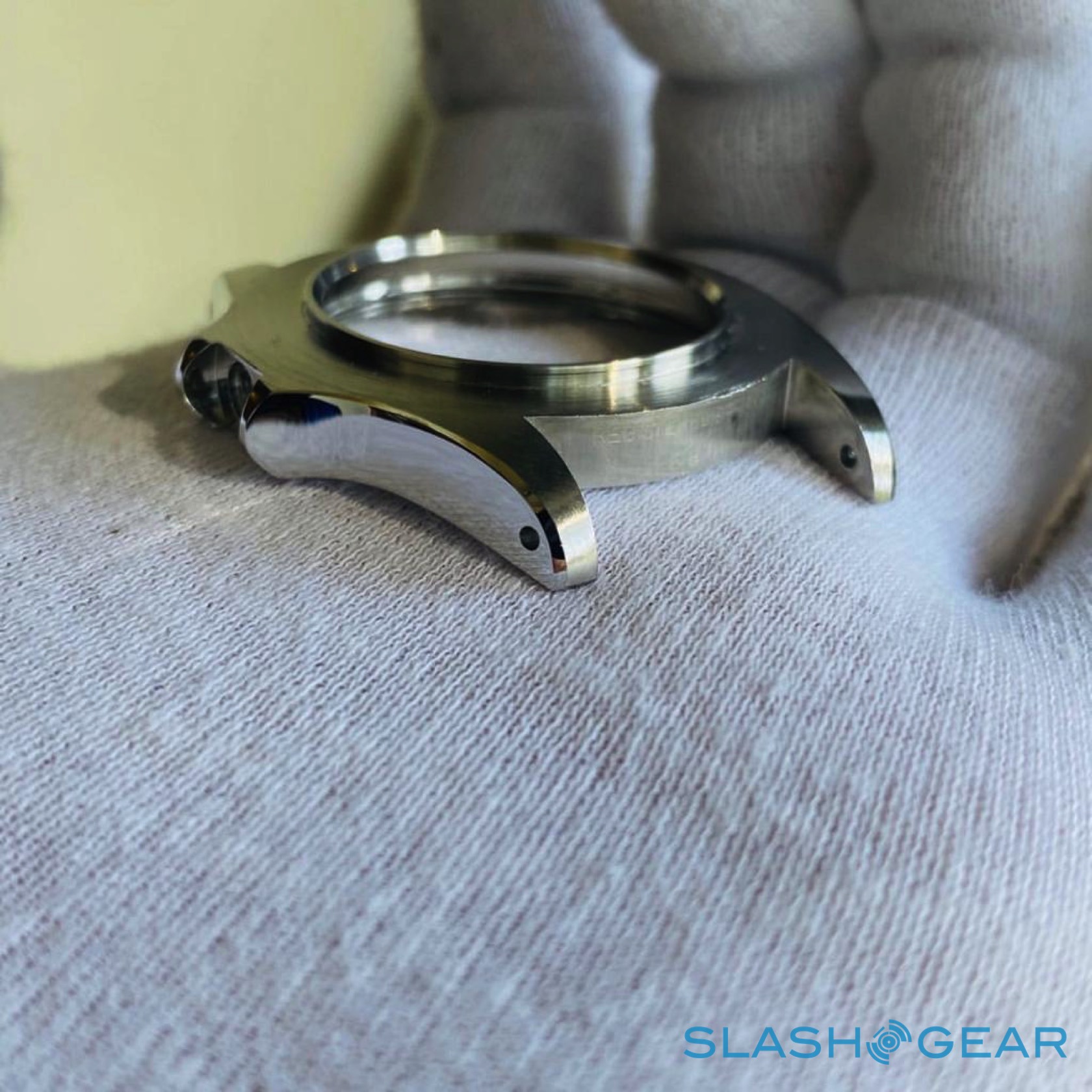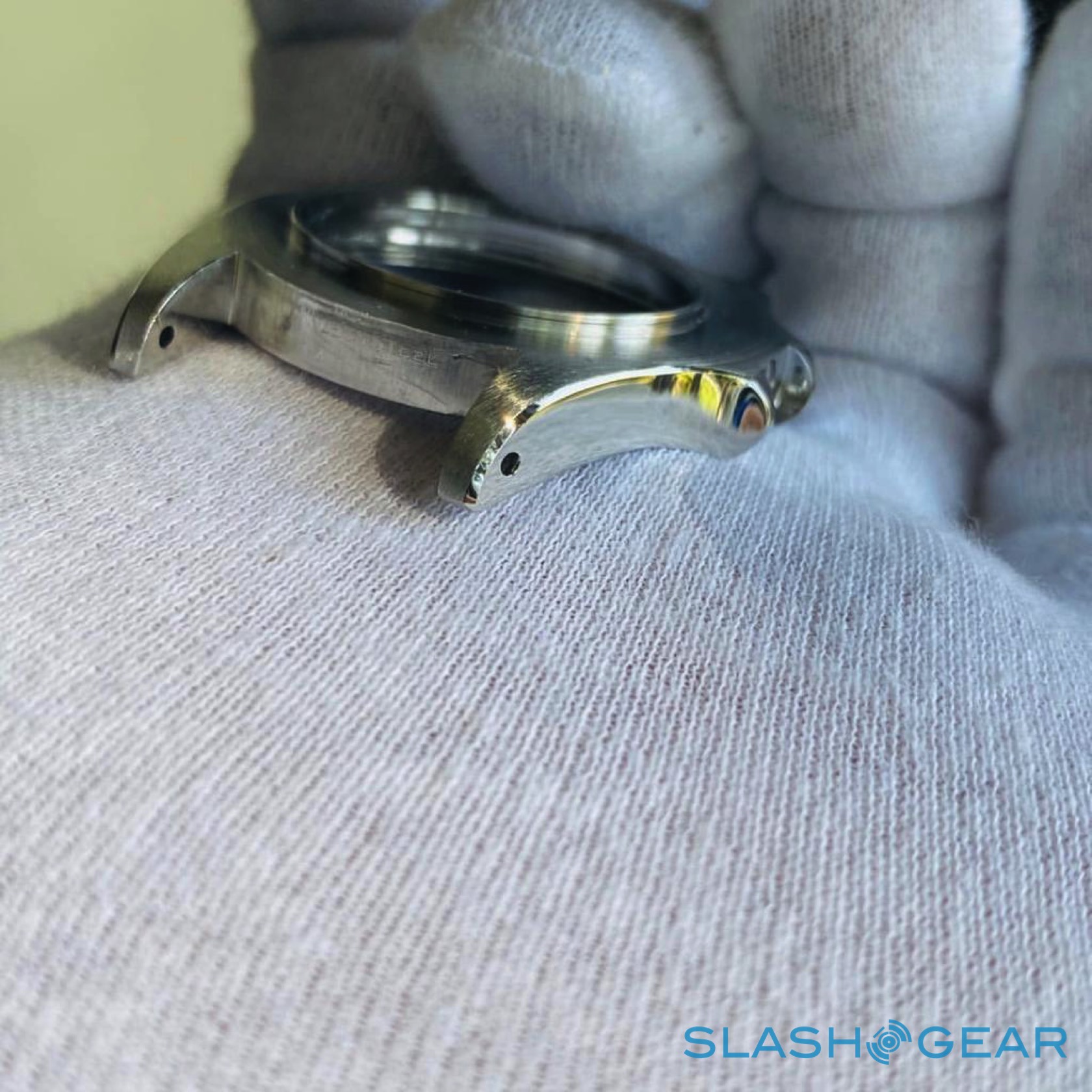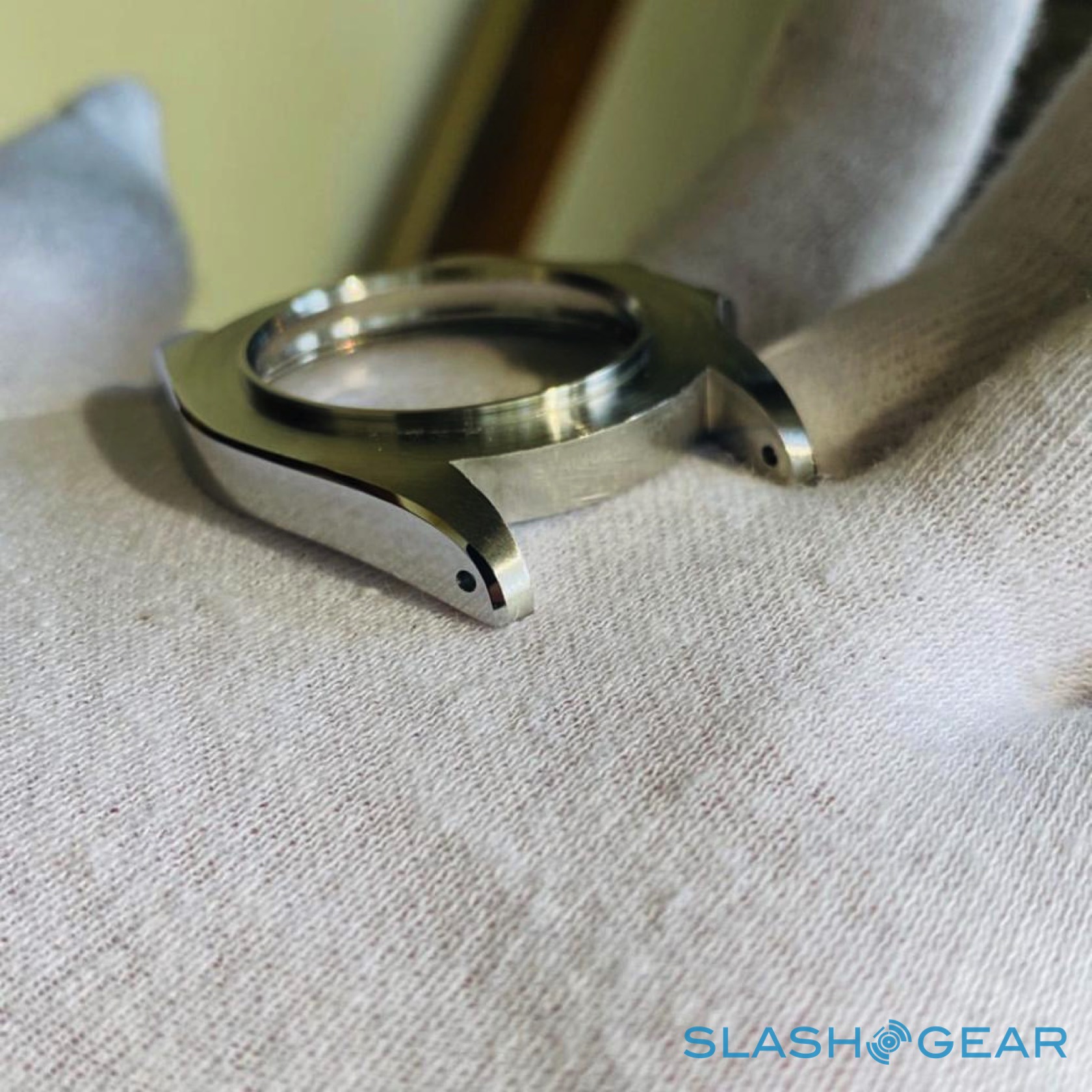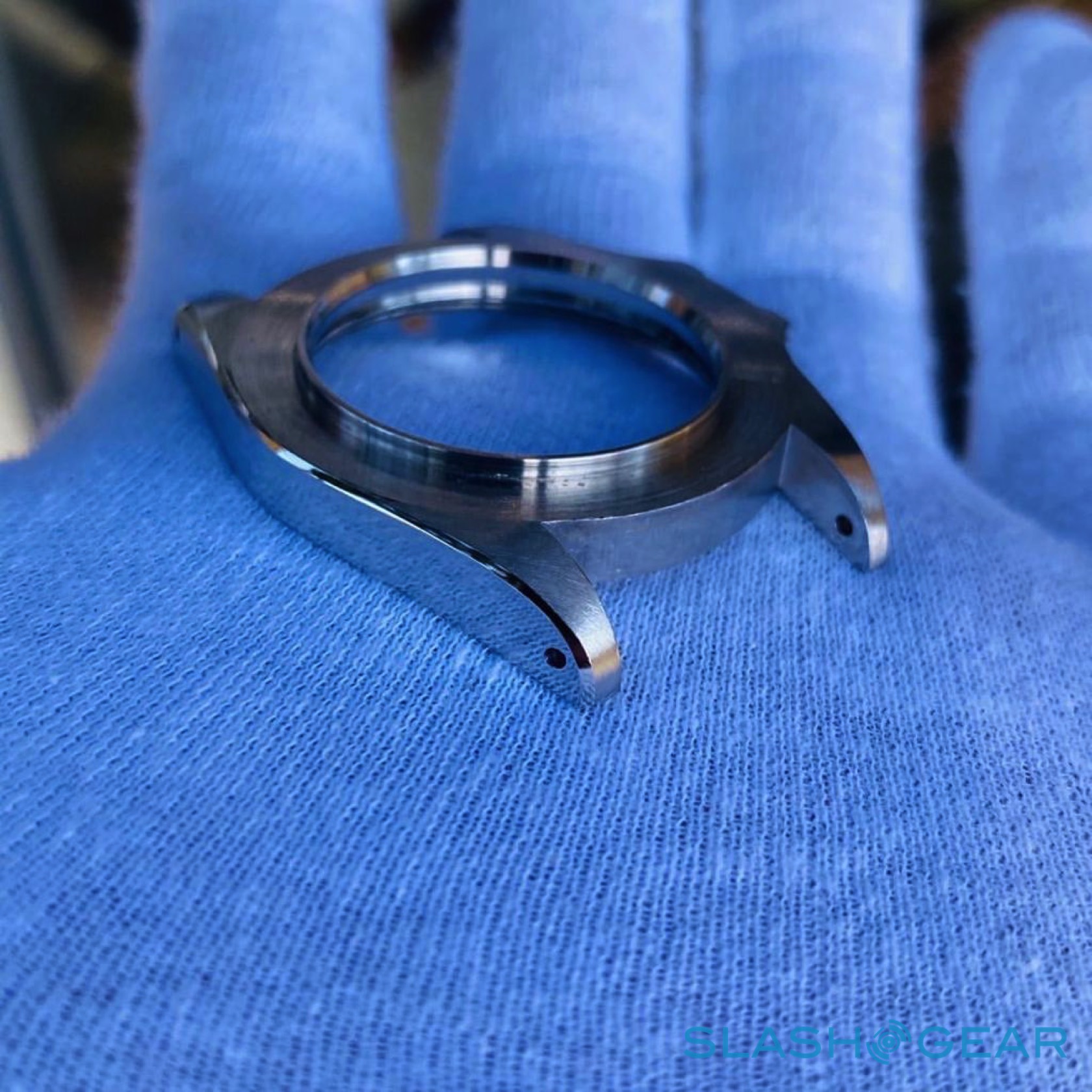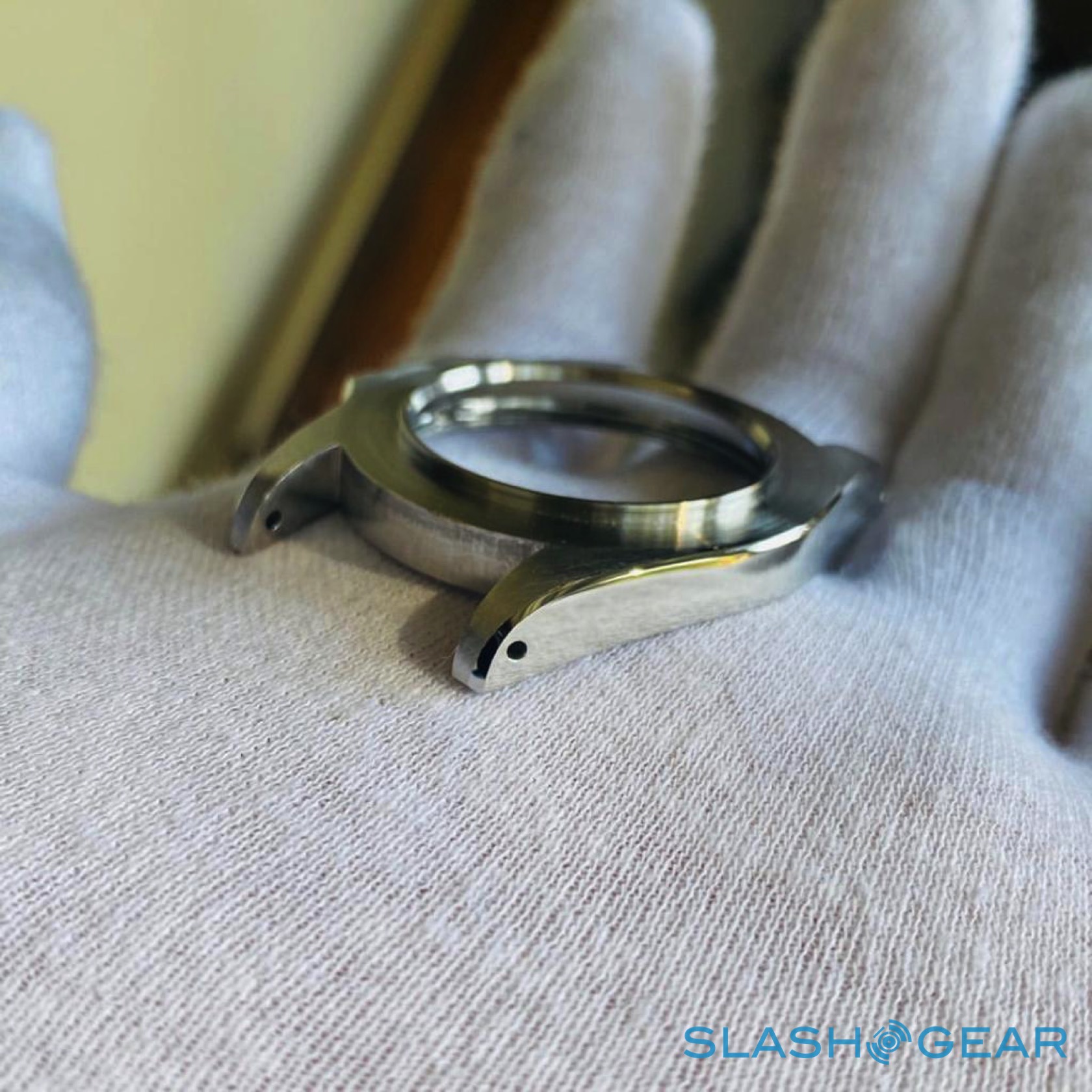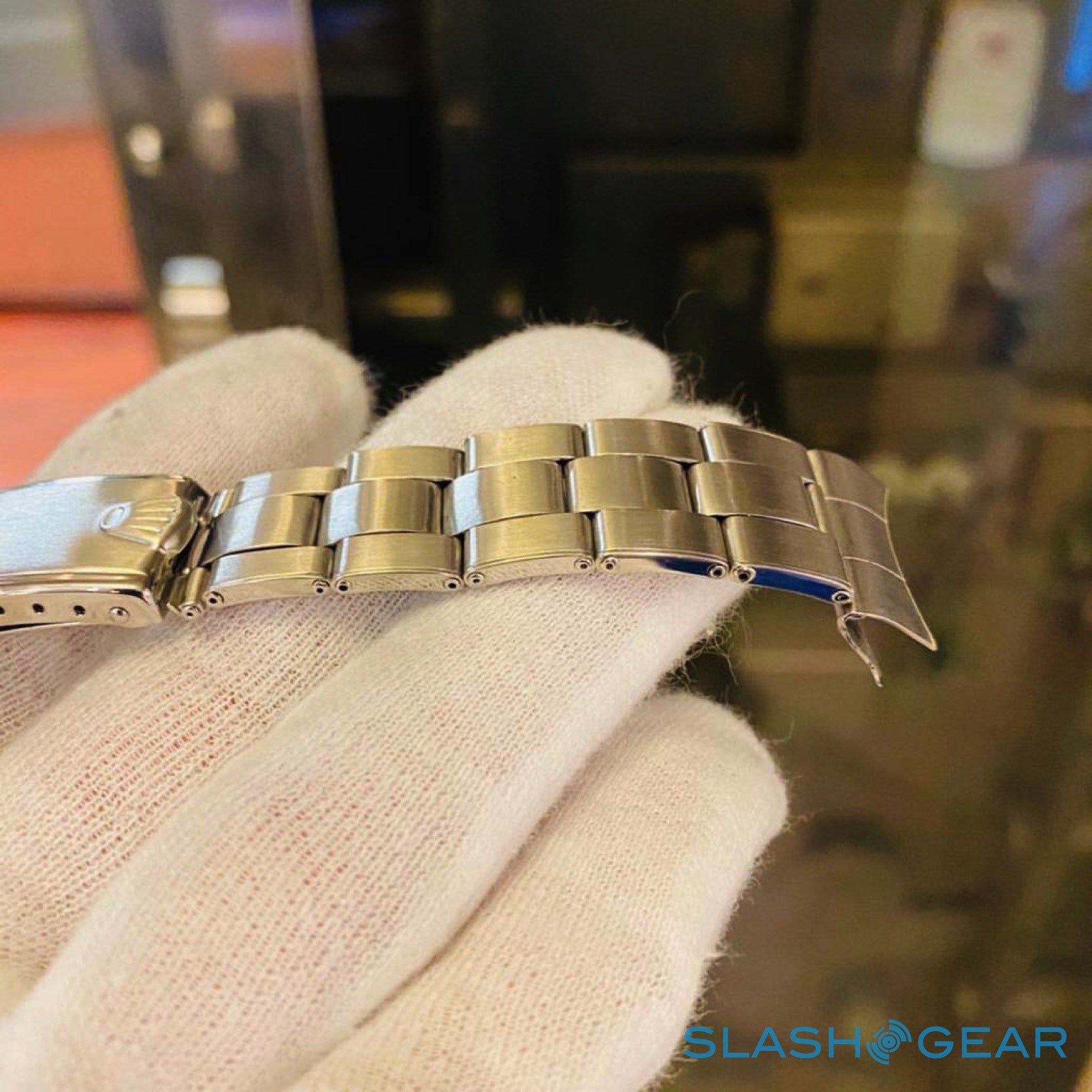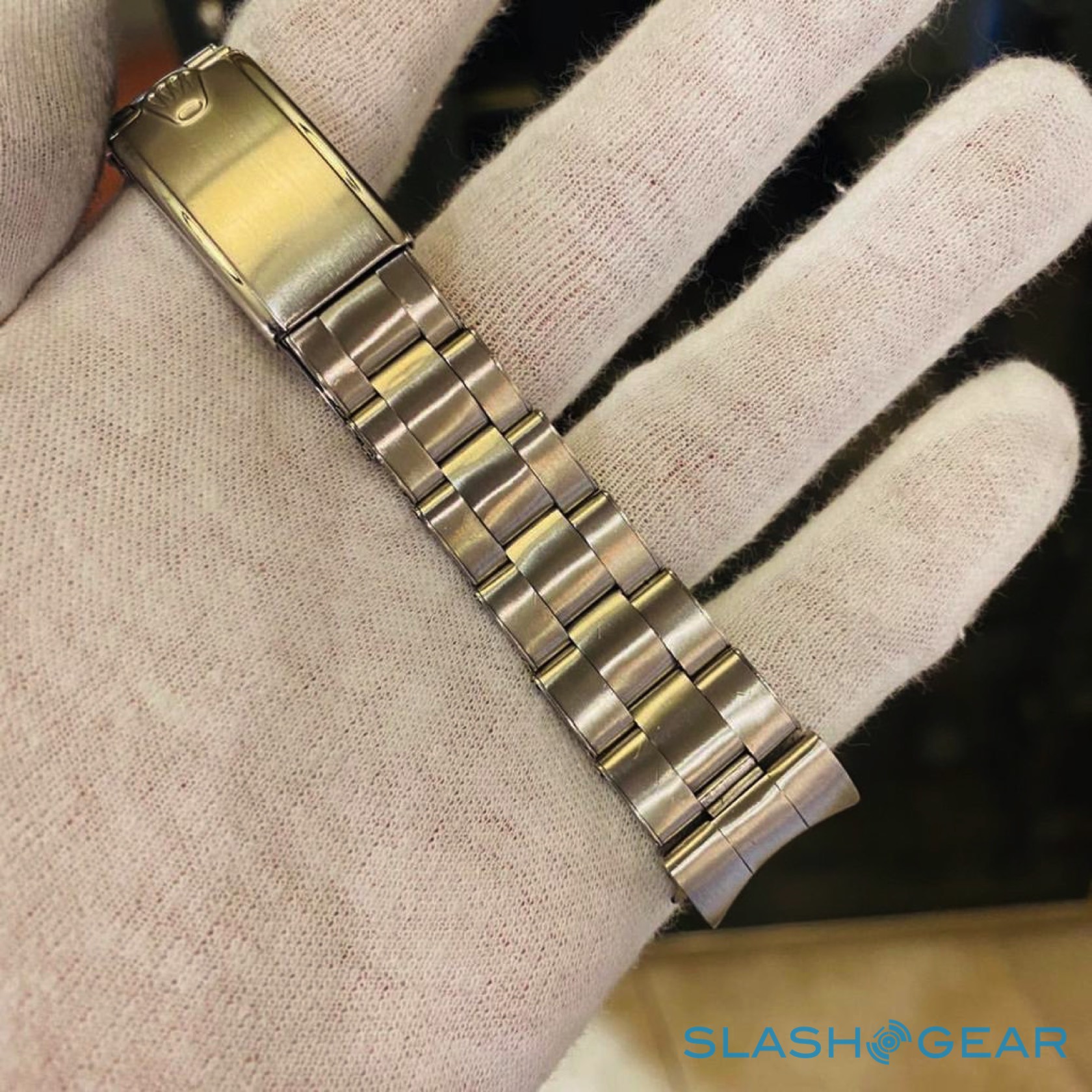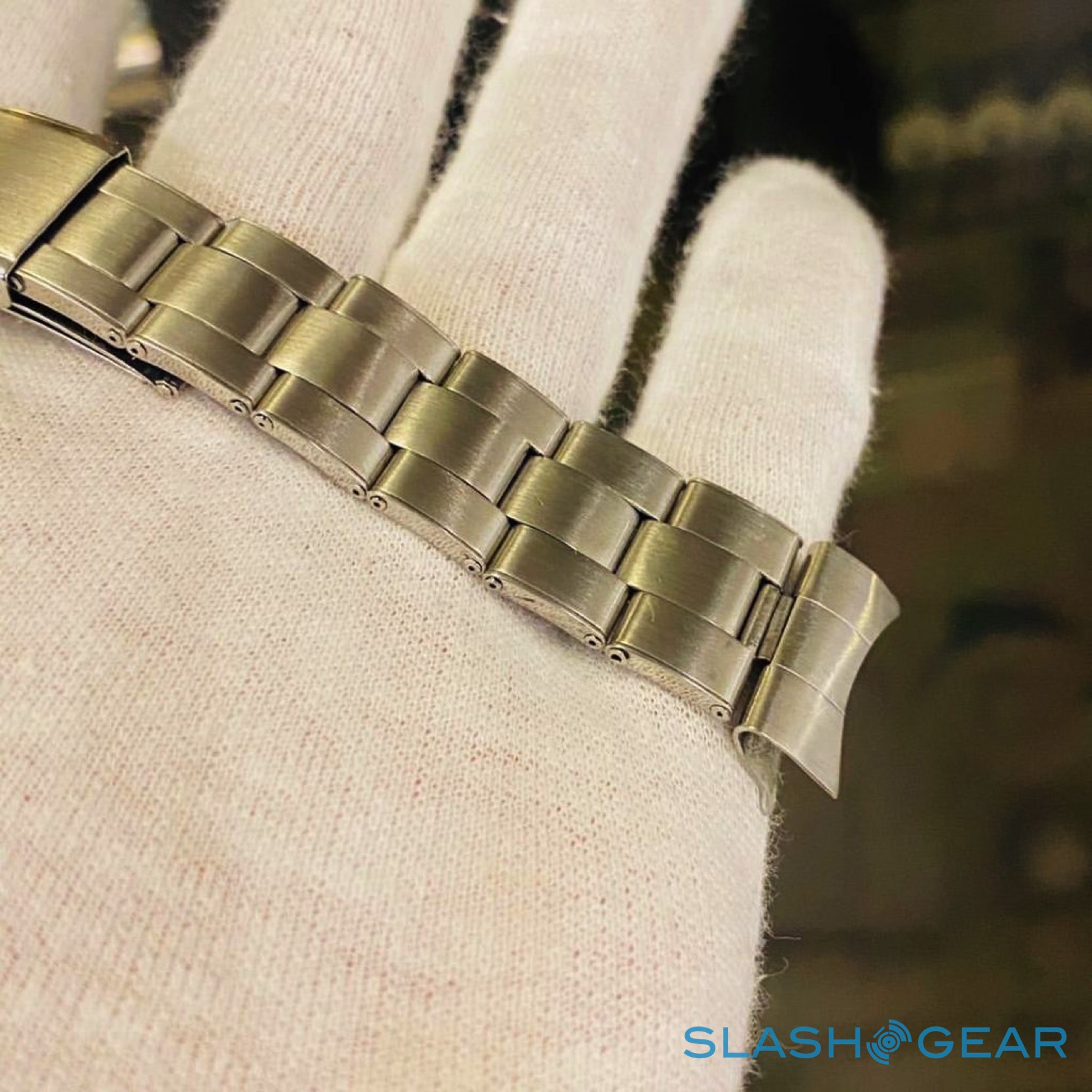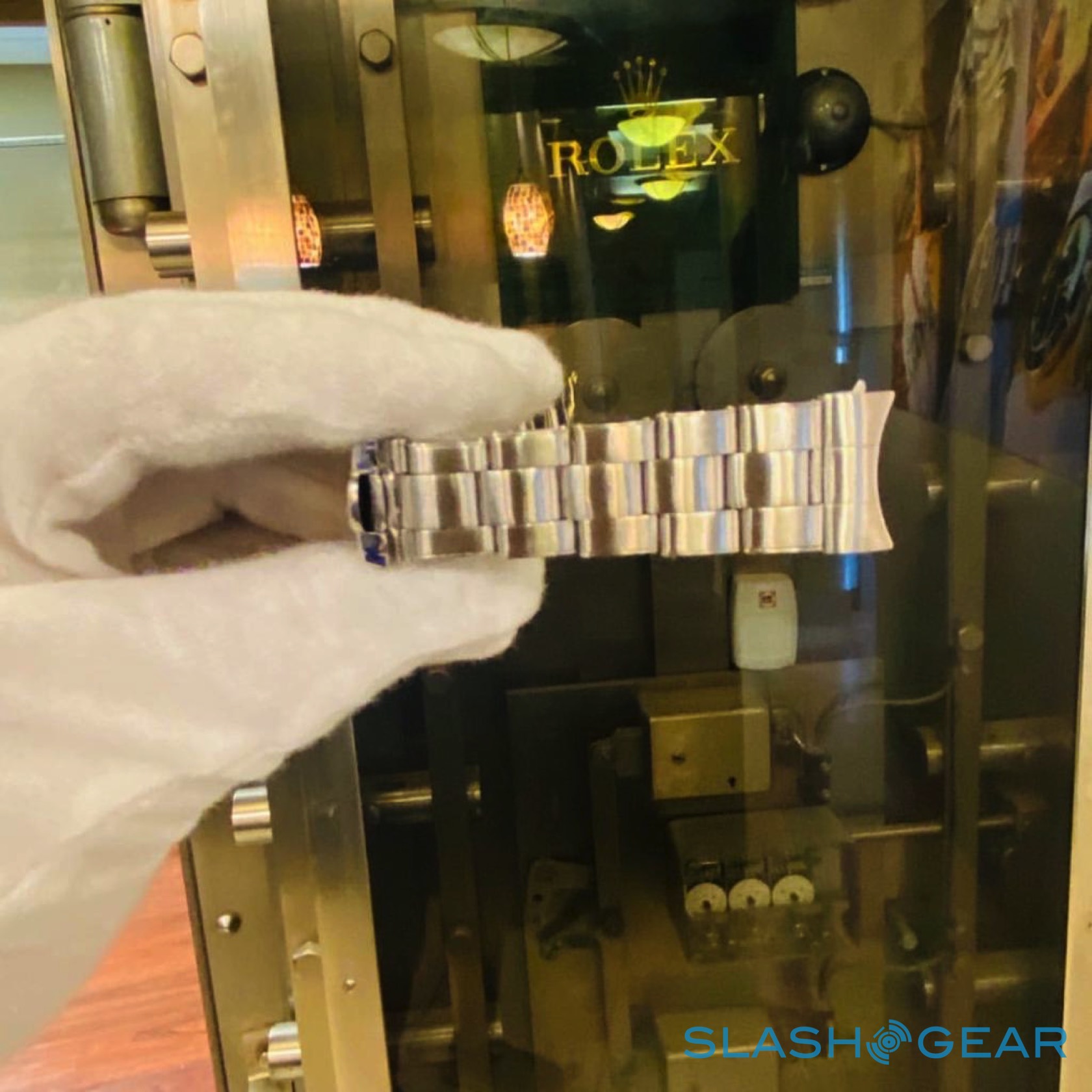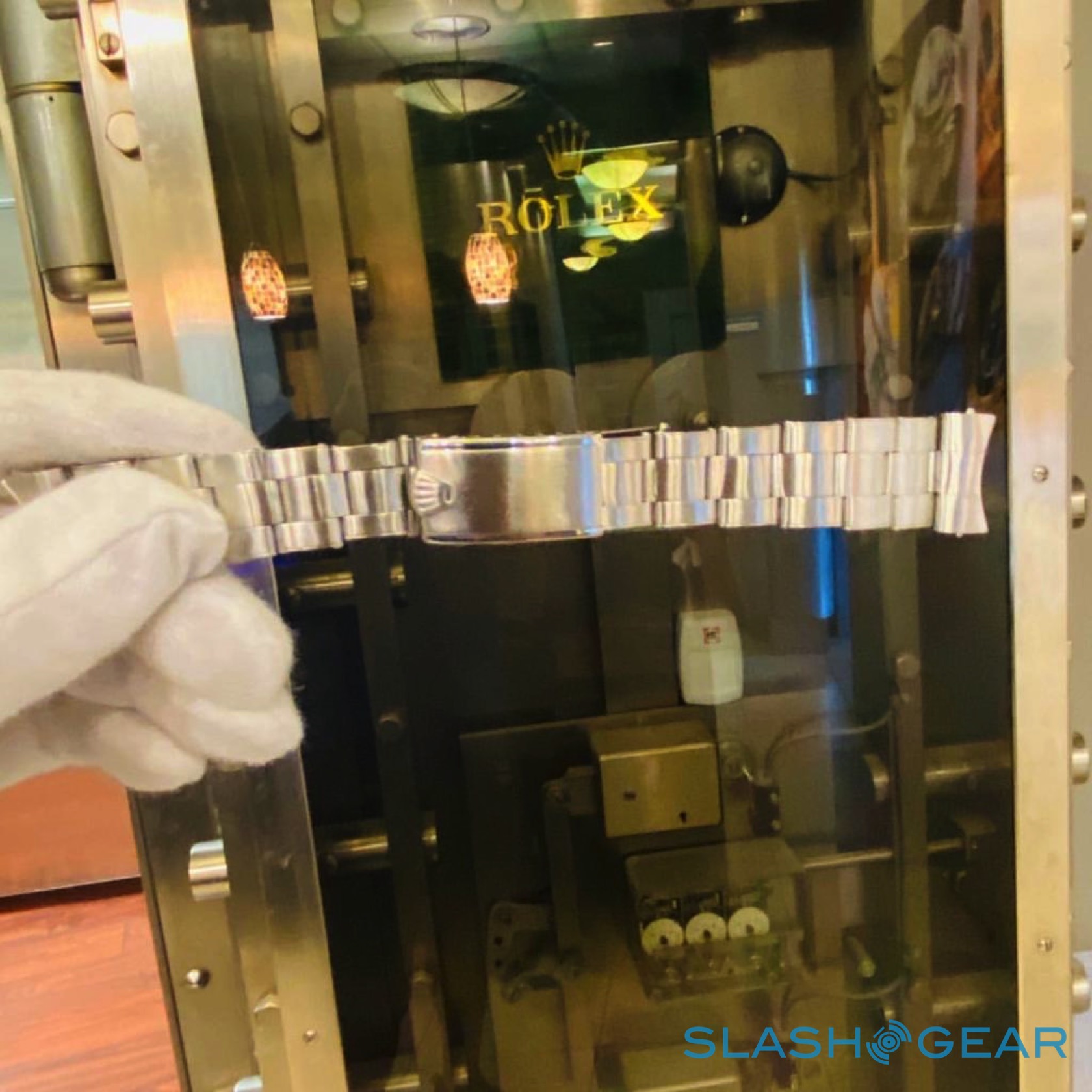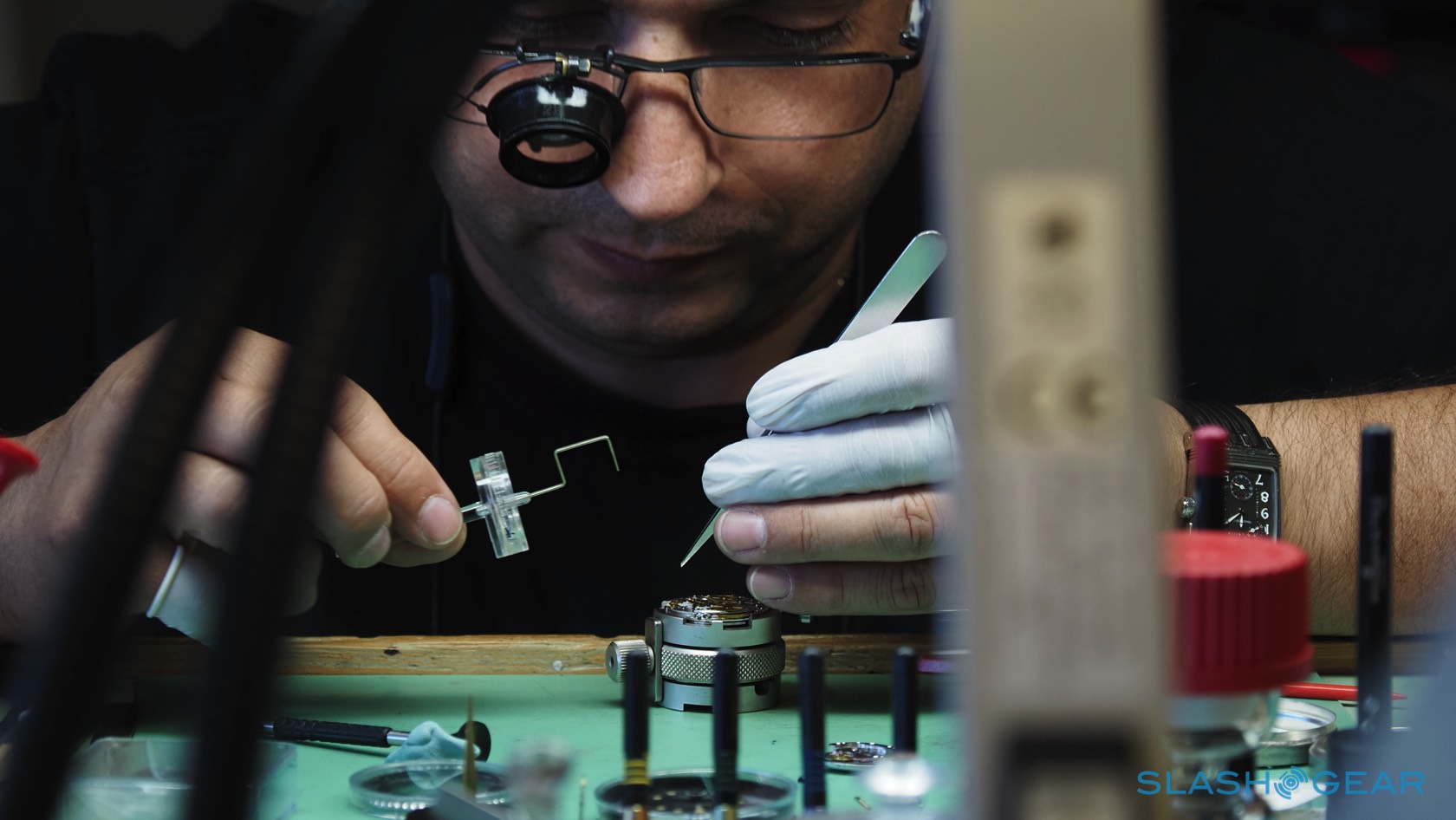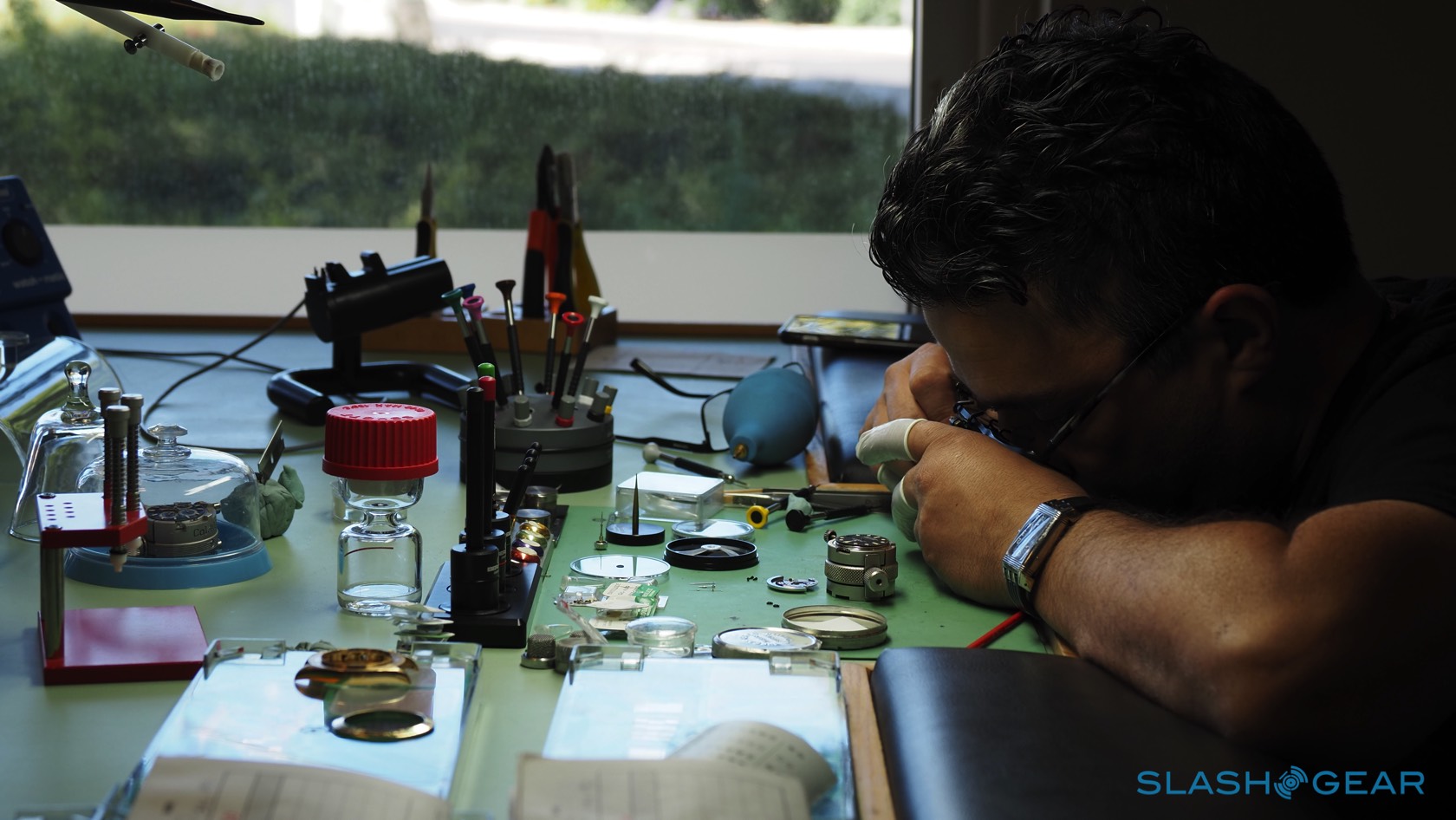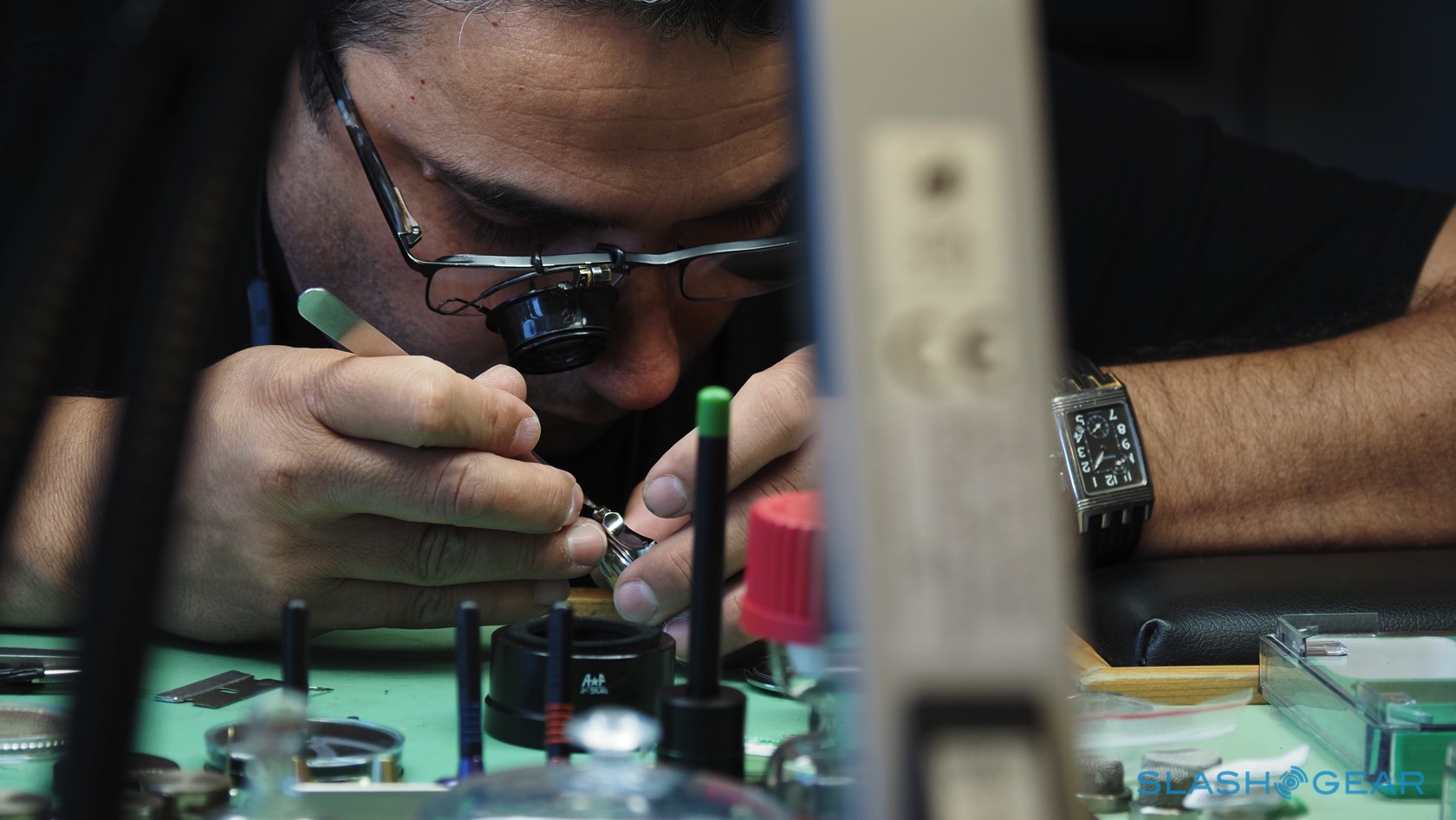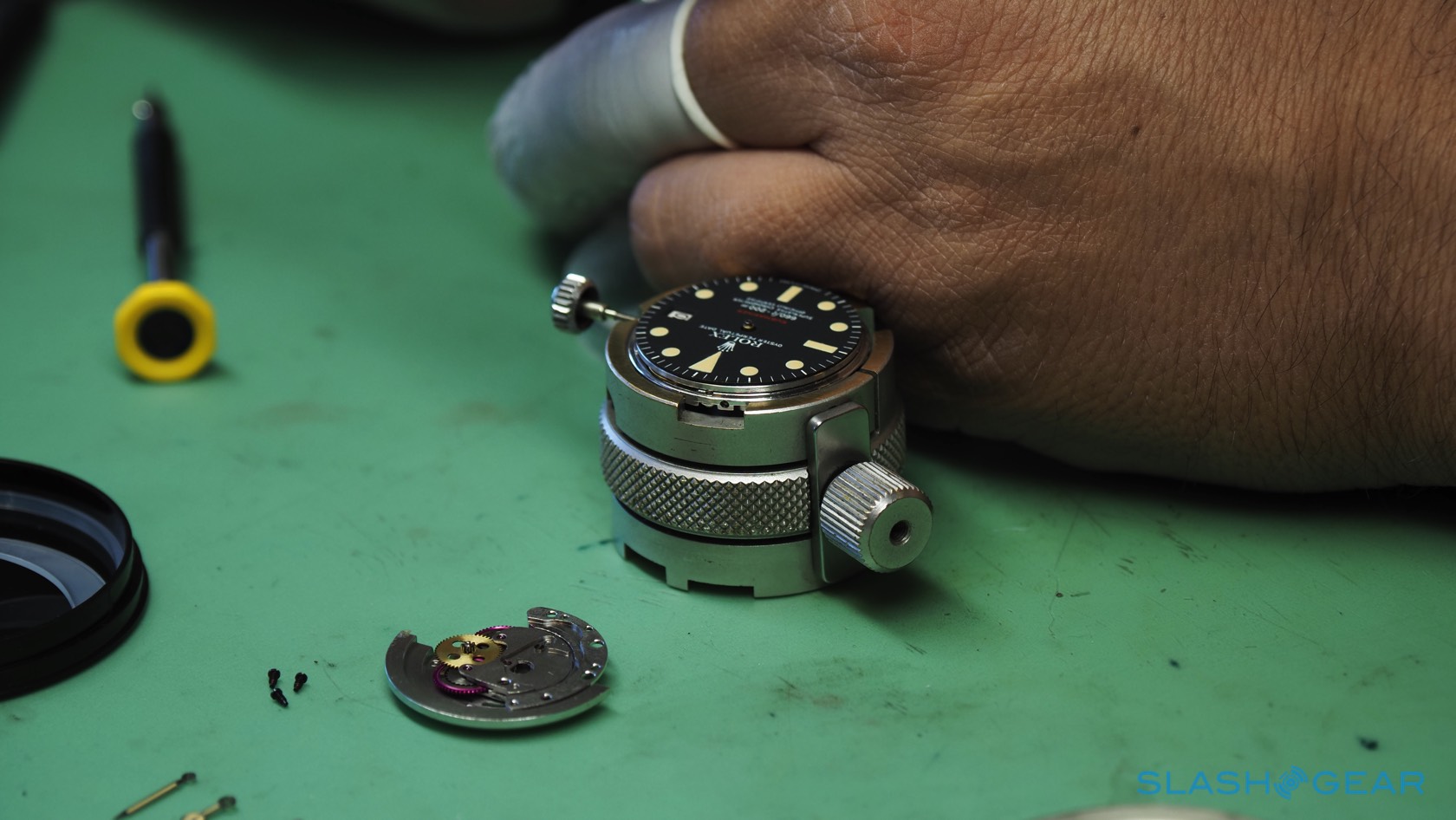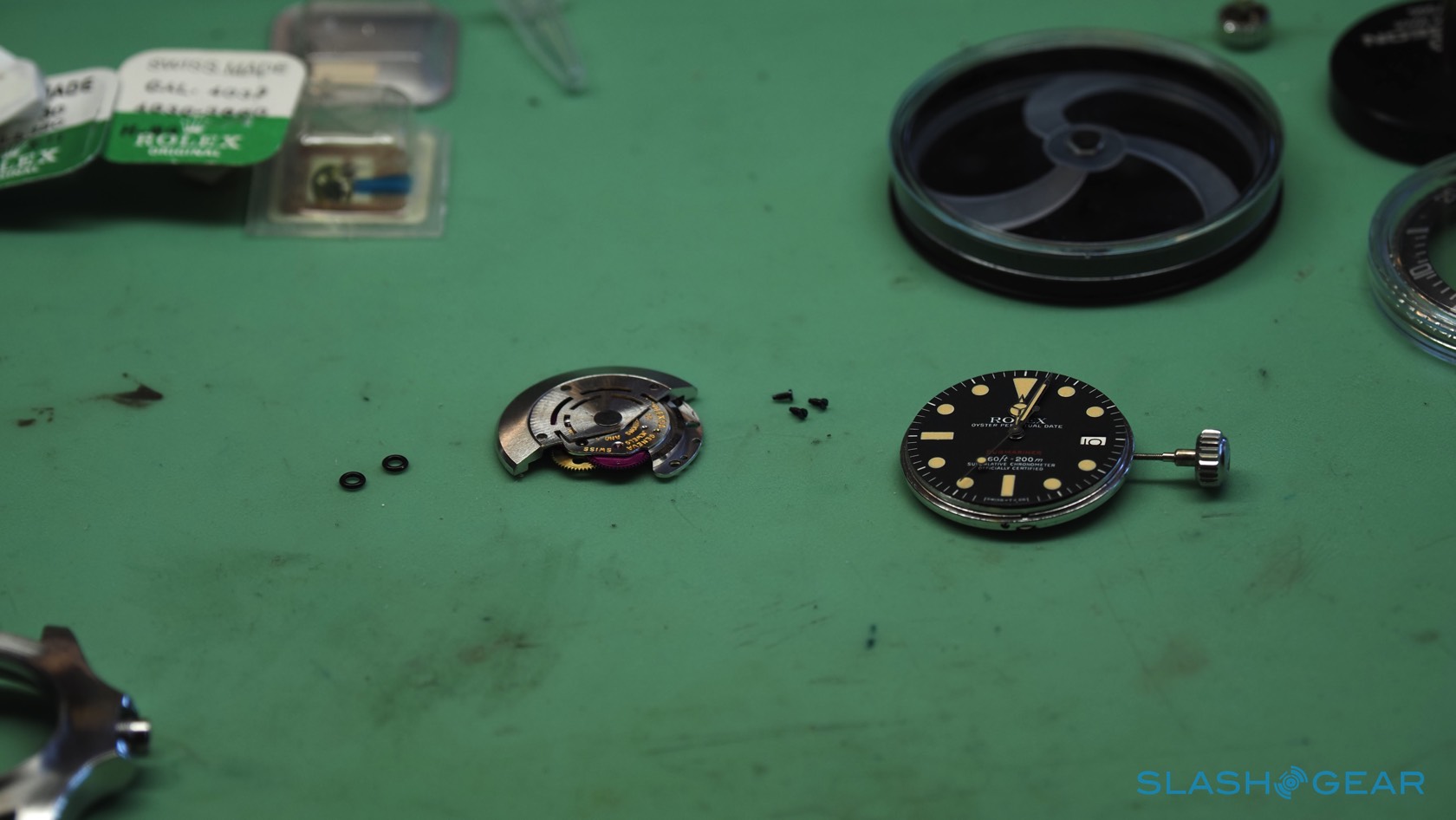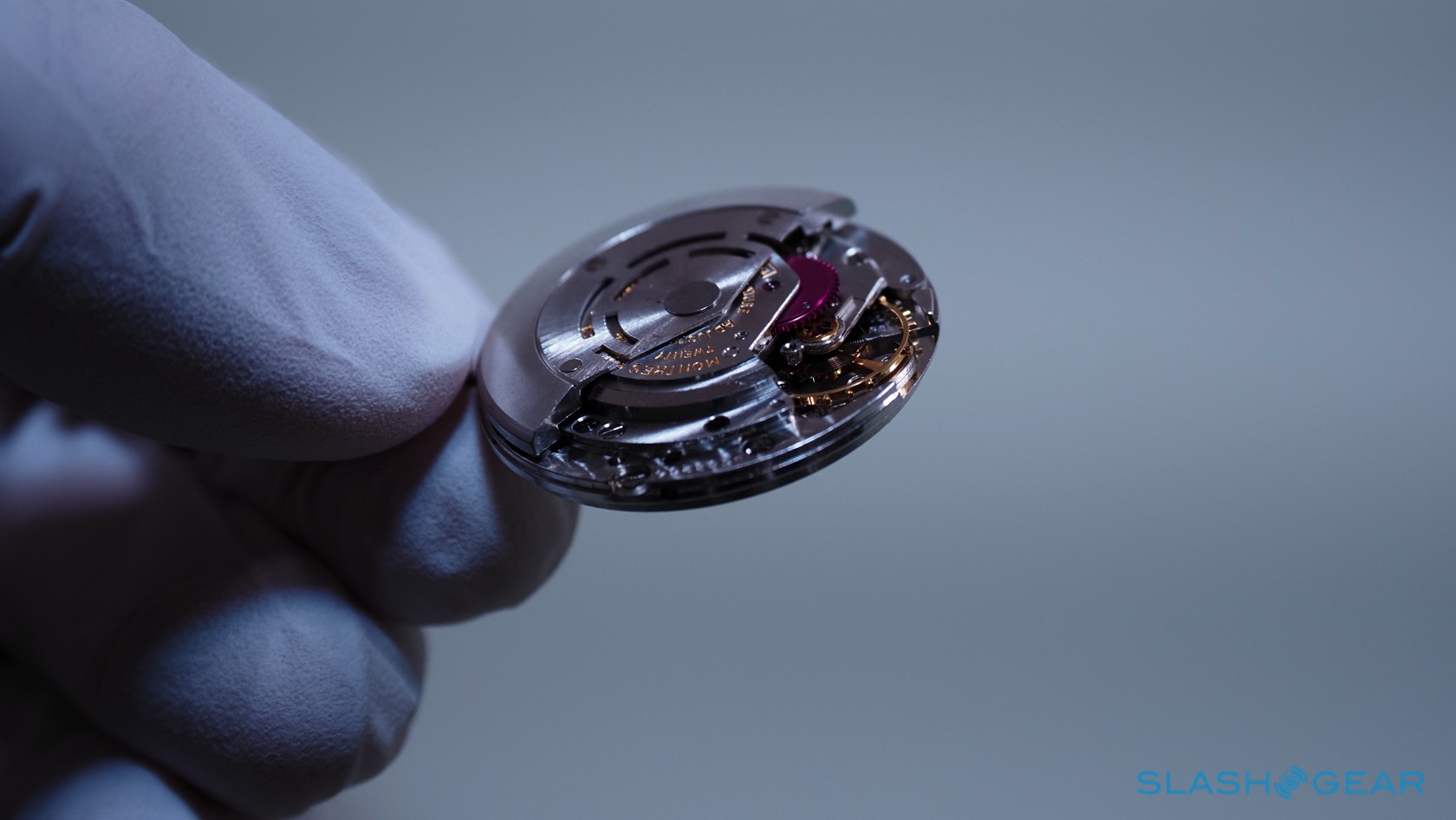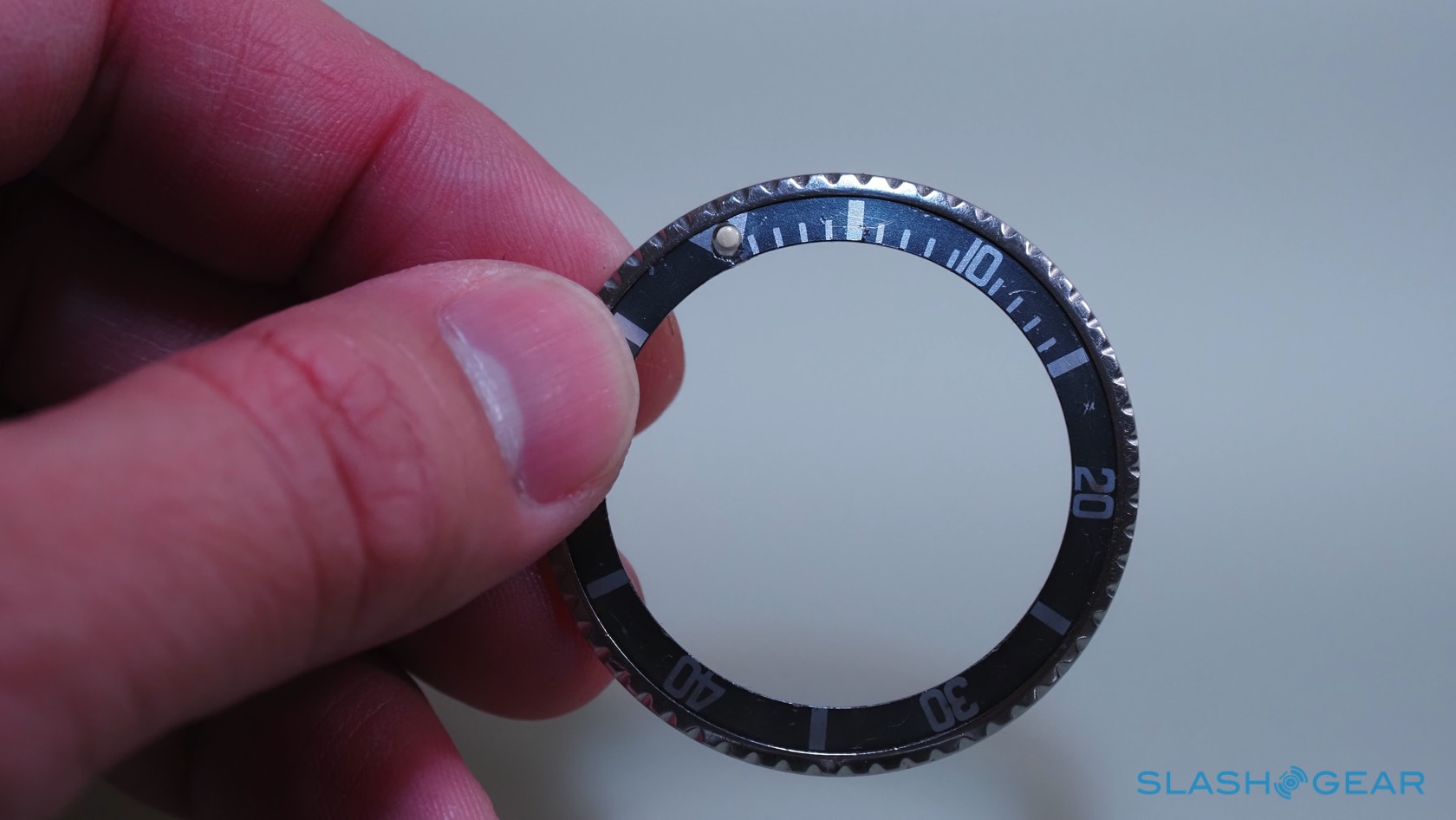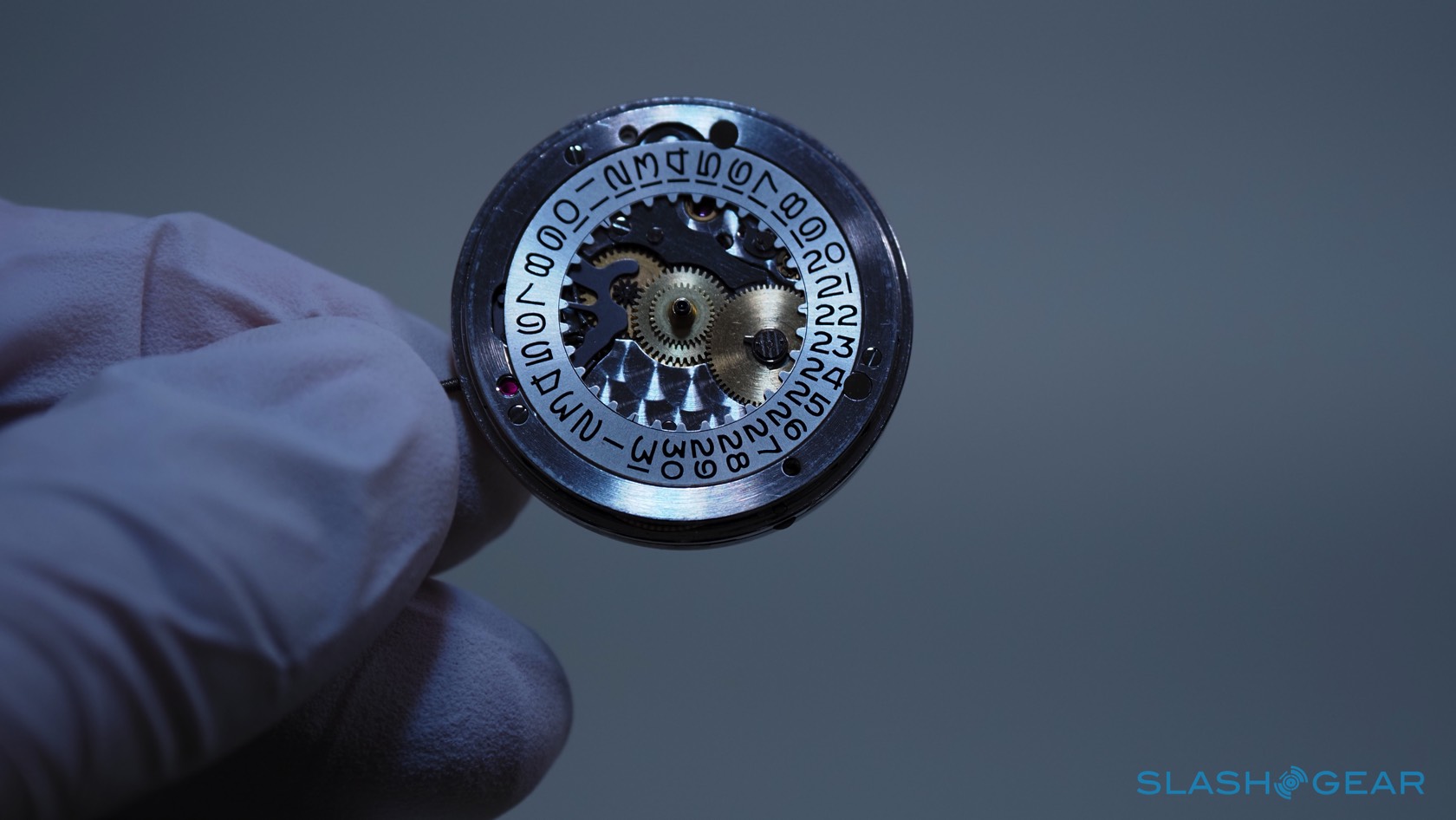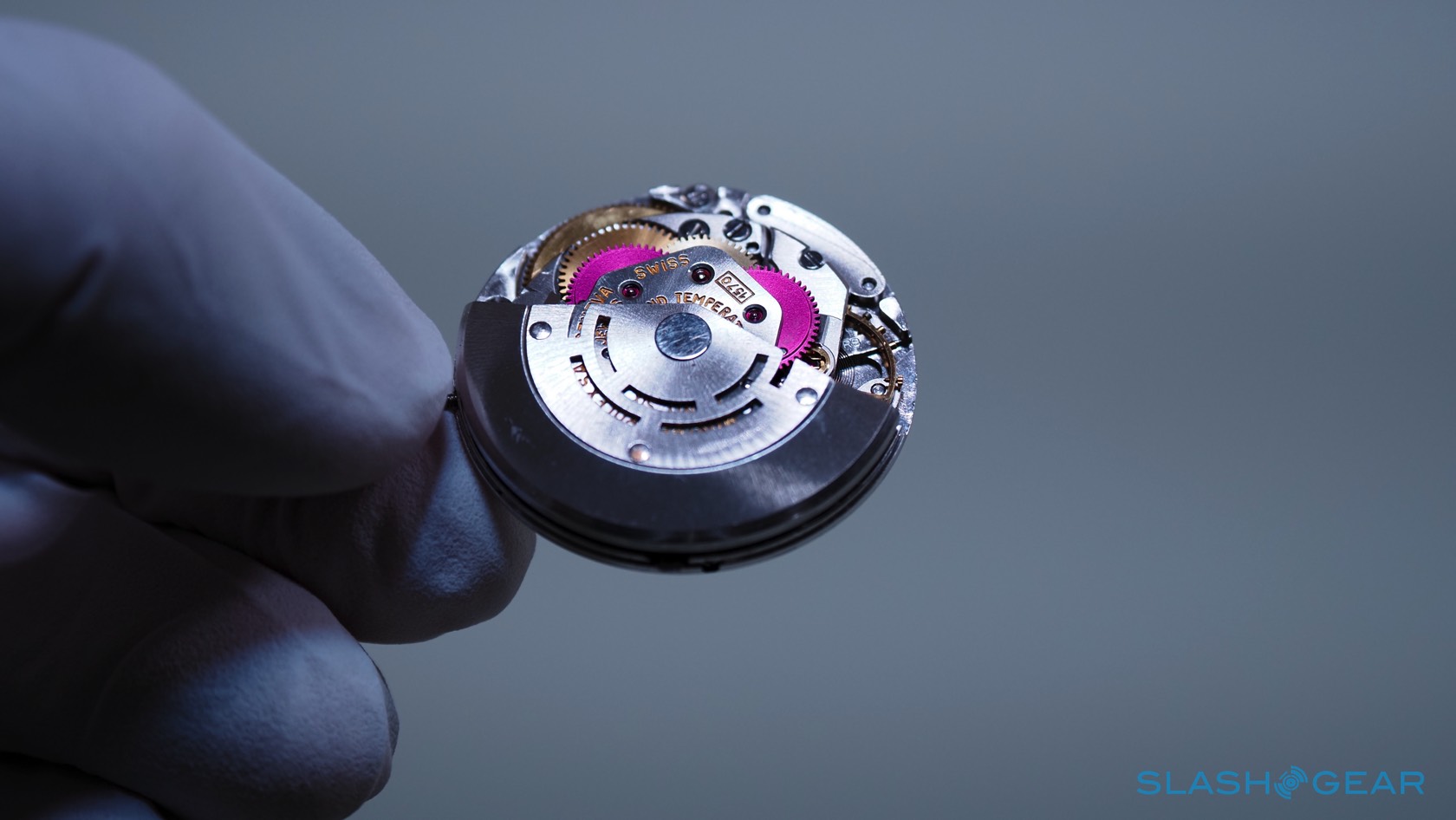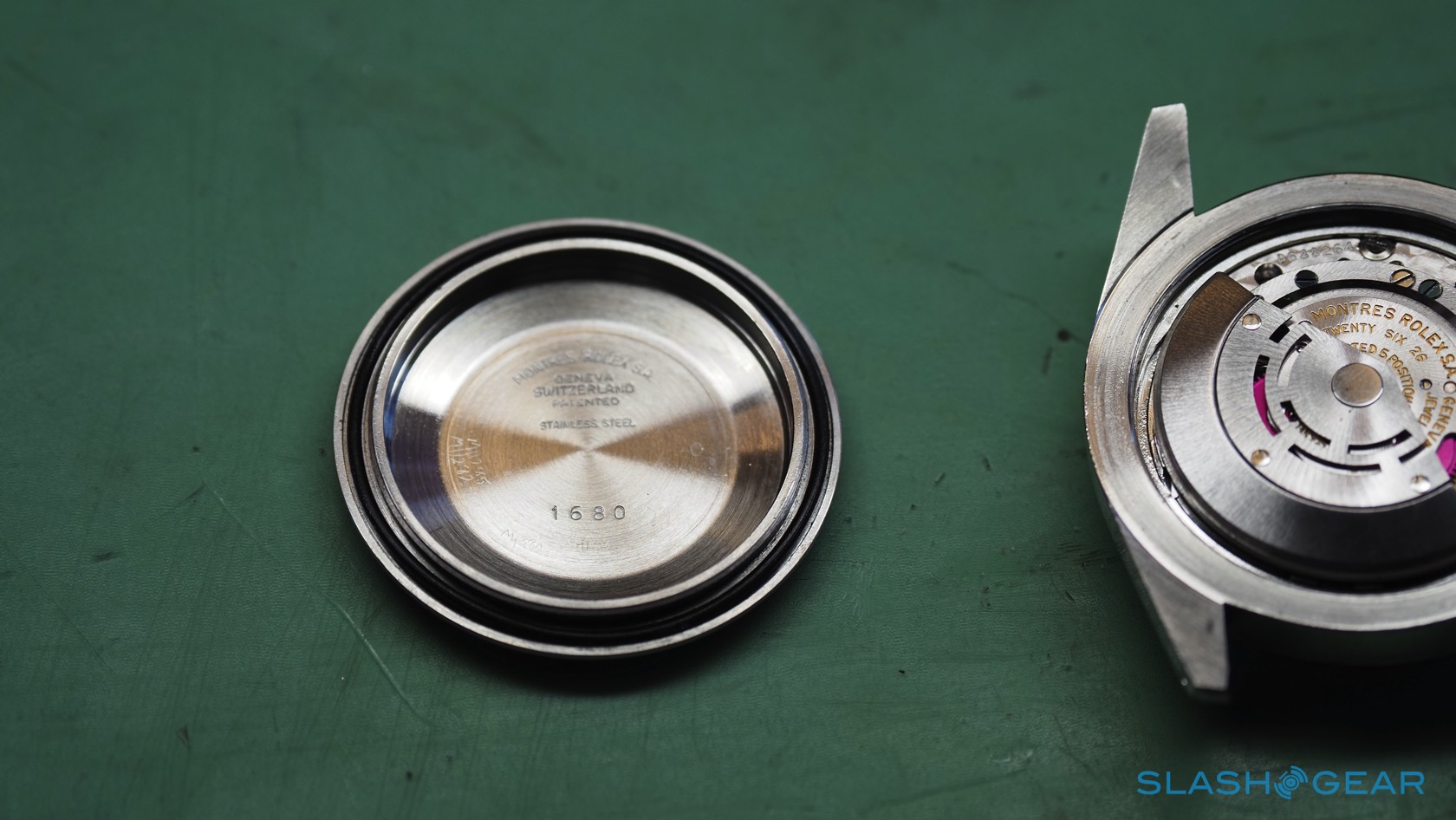Radiation And Controversy - What Restoring A Vintage Rolex Taught Me
Ask any watch fan, and they'll probably be able to tell you when they fell in love for the first time. For me, it was on July 22, 2013. There it was, a post on Facebook featuring a Rolex Red Submariner with full-box and paperwork, up for auction at Christie's auction house in New York.
It was everything a vintage Rolex collector would be looking for. The inner box, the outer box, the original chronometer certification papers, the brochure and booklet, the calendar card, the paperwork wallet, the Submariner 200 information, and even the metal Rolex anchor.
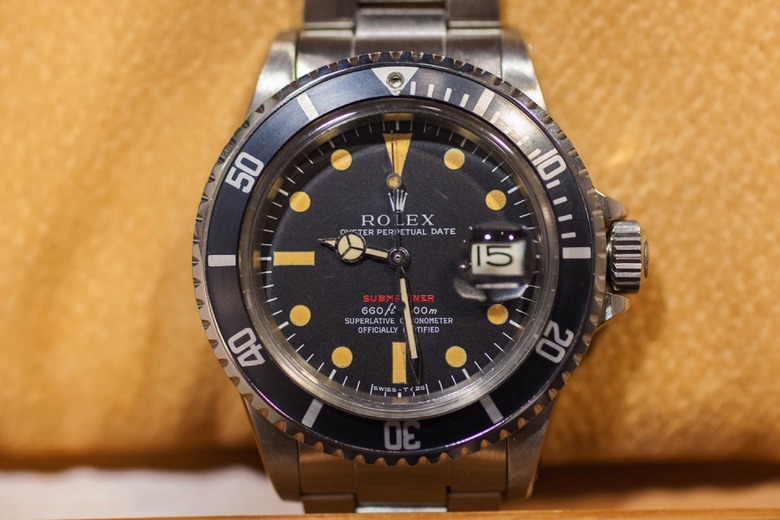
As for the watch itself, the dial looked excellent, its hour markers patinated to a delicious, cheddar-looking orange. Back in the day, Rolex used Tritium for its hour markers and hands, so they gradually changed color over time. It's something vintage fans look out for, since these changes no longer occur with modern Rolex watches. The bezel was in great shape too, with few scratches or dings. Not only period-correct for a circa-1971 Red Sub, it too had changed from black to a dark charcoal grey, with thick numerals printed on it.
Finally, the 9315 bracelet was also period-correct, and appeared to have little wear and tear. I'm by no means a collector, but you don't need to be to appreciate a handsome watch that has gracefully aged over time. The only downside? It cost $16,500, and back in 2013 that was a lot of money, even for a Rolex.
Fast forward seven years, and with the memory of that first watch still strong, I finally had an opportunity to meet a Rolex Red Submariner of my own. Where that first example was ready for the wrist, though, I got to go through the restoration process and discovered plenty about the world of bringing vintage timepieces back to life in the 21st century.
Know what you want - before you buy
I can't stress enough that you need to do your homework and know exactly the watch you want, because you can easily get lost in the world of Rolex vintage watches. Determining the model and year of the model you have your heart set on is the first step. For me, the Rolex 1680 Red Submariner was my "grail" watch.
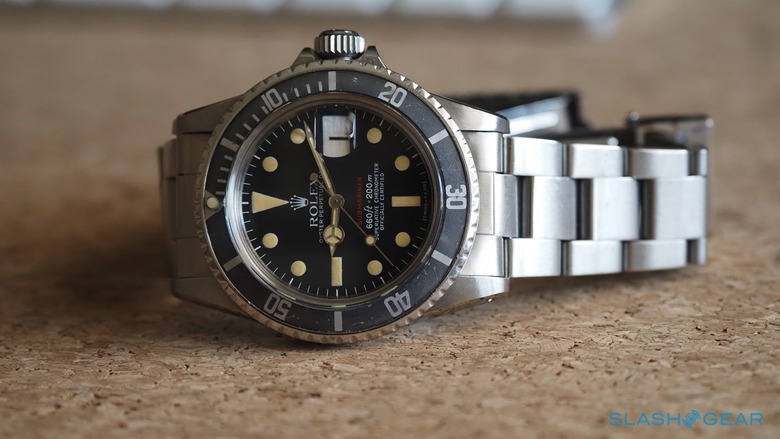
Now, the Red Sub I'd set my heart on dated back to 1974, for my birth year. Rolex sport stainless steel watches from the late 50s through the 70s all have a four-digit reference model number. For most collectors, four-digit numbers are highly sought after: in the case of the Red Sub, it's 1680.
I first saw my grail watch on Facebook, so, ironically, it was Facebook Marketplace where I stumbled onto another one, nearly 8-years later. Only problem was, it was far too expensive for what it was: not every Rolex is created equal, or ages equally for that matter. The dial markers weren't original, meaning that the original Tritium paint was replaced with newer material applied. Then there was the aftermarket bezel, bezel insert, and some terrible, fake-looking pearl in pearl (PIP). Finally, the bracelet looked to be aftermarket, and incorrect for the watch as well.
It had four things going for it. A clean dial with the 'red' Submariner logo still intact. A solid looking case, even if the lugs at 5-o'clock seemed poorly polished and thinner than the rest. The serial number was in the 3.8M range, and so the overall watch could be a genuine Red Sub. Finally, the movement still ticked.
All the same, no matter how I tried to justify it, the price tag was just too rich. Even after several price drops, I couldn't commit.
After two hours on the phone with the seller, the sad story of a restoration attempt done poorly became clear. Tritium's half-life is only 12 years, and so the owner had the markers "relumed" with a more modern material, just so they'd glow again. It wasn't a terrible job, but it wasn't authentic. Then the original bezel and bezel insert were incorrectly reinstalled, subsequently fell off and were lost, and aftermarket parts put on in their place. That also involved replacing the original retaining ring with another non-Rolex version.
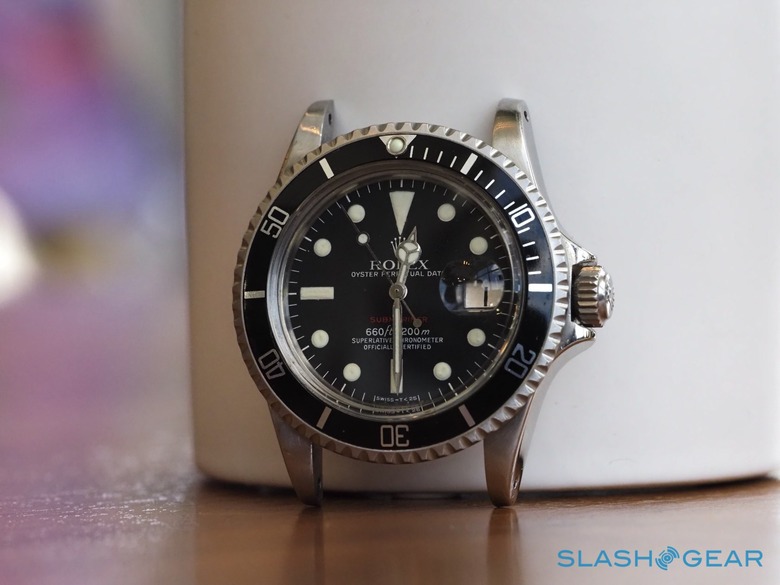
Maybe it was listing out just what would be required to bring the Red Sub back to its former glory, but the price tag kept shrinking and suddenly it was in my budget. For me to pull the trigger, though, I knew I'd need to have it relumed, and done properly at that.
Tritium isn't something you find just anywhere. Both rare and radioactive, it fell from favor as a watch paint because of its high price and potential health hazards. There are vanishingly few people who can access it, know how to safely apply it, and will agree to do both. For the Red Submariner, though, it was just perfect.
A quick diversion through the history of the Rolex 1680 Red Submariner
It was 16 years from Rolex first launching the Submariner in 1953 to add a date complication with a date window, and the iconic cyclops lens above it. The Red Sub features a 1575 Chronometer movement, which is basically the 1570 movement hacked to support a date display. Intended as a tool watch for divers, it features a depth rating of 200 meters or 600 feet. At those depths, you want your dial to glow so as to be properly visible.
There were seven different dials introduced over five to six short years: the first three dials showed the depth rating in meters first, then Rolex flipped the order where feet came first for Mark IV through VI. The seventh dial, considered a Red Sub service dial, came last, and then Rolex officially settled on using the color white in place of red starting at the 4.0M serial number.
Like any Rolex – or, indeed, any vintage watch – there's always the possibility of different examples being hamfisted together to create a "Frankenwatch" with mismatched dials and cases. Rolex being Rolex, we don't know for sure the exact serial number ranges for each of the six dials, just rough estimates.
The Mark I dial serial number starts at 2.07M to 2.2M. Mark II/III were released together for a brief period between 2.2M to 2.45M. Pay close attention to the closed '6' in Mark I, compared to the open '6' in Mark II/III, to tell the difference.
That open '6' continued into the Mark IV and V dials, where it starts to close up ever-so-slightly. On the Mark VI dial, the number '6' completely closes the loop.
There's theory, and then there's reality
In the ideal world, you find the best example of the watch you can buy in the most original state possible. That, of course, would have been my first choice. Given just how expensive vintage Rolex watches are these days, however, a poor condition Red Sub might not start below $17,000. One ready for your wrist could easily set you back $20,000 or more.
That's well out of my budget, but even then you have the reality that different components may still not be completely original. The bracelet or the bezel could have been changed out, scratched up, or cracked. Original 9315 bracelets can easily cost $2,000, while a period-correct MK3 bezel can go for $1,800 to $2500 depending on condition. If the hands were replaced, they could be mismatched to the dial's lumes. In short, even after you've paid a premium for the watch of your dreams, you could easily need to spend additional money on it.
The upside of finding a poorly-restored Red Sub – one which no collector would even come near with a 10 foot pole – meant it was far more affordable. That meant allocating what budget I had left on prioritizing what gets restored first.
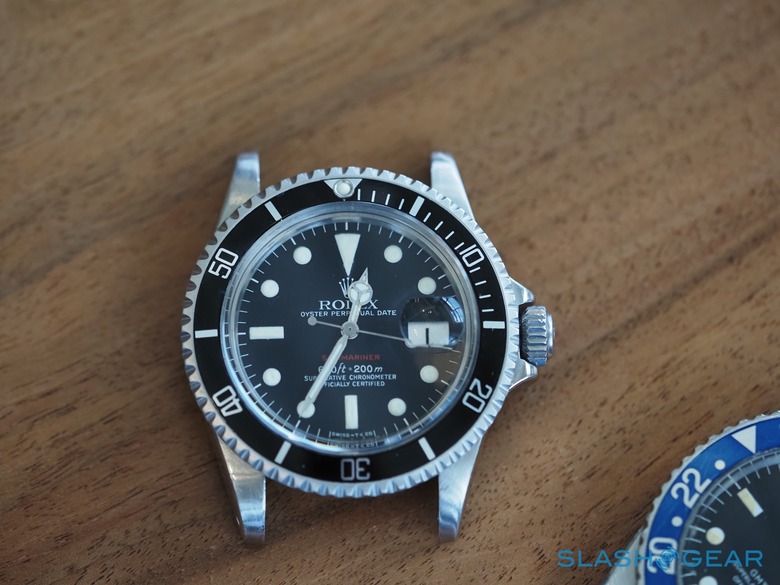
There was certainly no shortage of candidates. The relumed dial wasn't ugly, but it's wasn't pretty either. The aftermarket bezel was painfully out of place, with its fake-looking repainted pearl. Not only was the bracelet wrong for the watch, it was doing damage of its own by scratching the case.
Finding the right experts was the key, and some of the best are showing their talents on Instagram. Andy at Geoffrey Roth Watches (IG: @gr_watches) put me in touch with Ron Landberg (IG: @cosylda) – an experienced watchmaker with about a decade's experience of working with Rolex – and suddenly the Red Sub's future looked a little brighter.
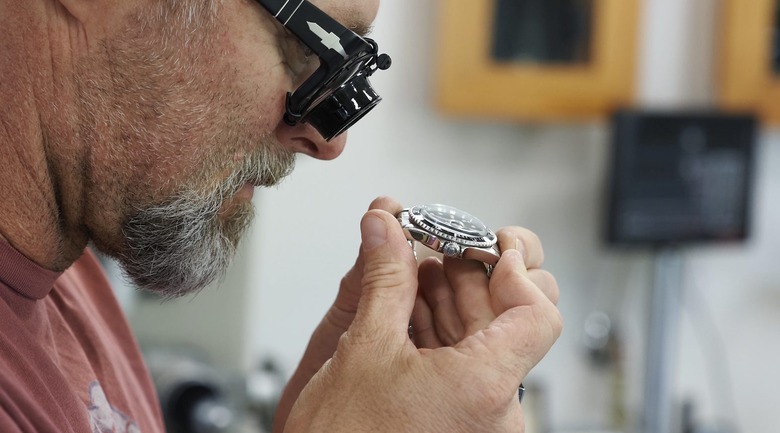
Restoration is a little like an archeological dig: you don't quite know what you're going to find until you start. In what will probably be familiar to anybody who has renovated a house, or tried to bring a beloved old car back to life, the surprises tend to come with sizable price tags too. All you can do is grit your teeth, redo your math, and try to keep up.
The dial was an eyesore, but I could live with it. Instead I prioritized the bezel insert, only to discover that good, authentic examples could chew through half of my restoration budget on their own. The only fix is to go hunting again, and hope that bargain lightning strikes twice. Sure enough, when a full bezel insert, bezel, and retaining ring appeared for sale, I jumped. Better still, they'd faded to the exact color I was hoping for.
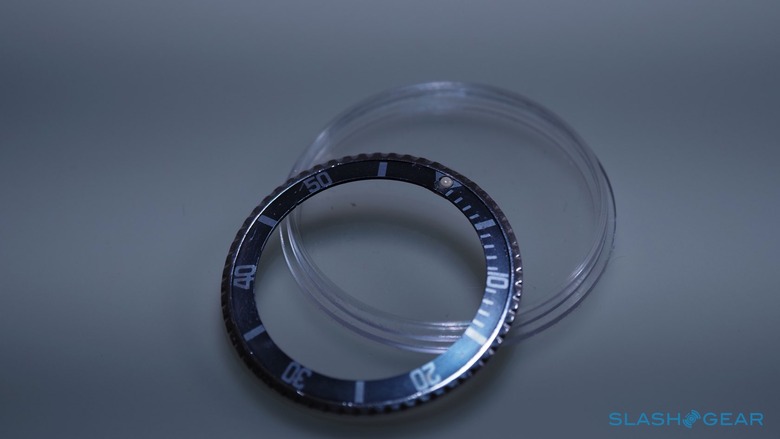
Each step proved to be a history lesson. The bezel I found has the perfect thick fonts, so much so that the numbers 4 and 0 are slightly connected. That earned it the nickname "kissing 40," a flaw in the original Rolex stamping process that has, over time, gone on to build up a mini legacy of its own.
You also have to be ready for frustration: what can go wrong, often will. The acrylic crystal can easily crack when you're removing the movement and dial, for example; sure enough, that's just what happened. Then again, sometimes serendipity smiles upon you, like when I stumbled on a genuine pearl in pearl complete with creamily-patinated Tritium, which I could install myself and in the process cover a slight crack on the vintage replacement bezel insert.
A glowing recommendation
There are talented experts all over the vintage watch industry, often specializing in just one element of the overall process, and most of the time you discover them through word of mouth. Just when I'd resigned myself to not having authentic Tritium, another Rolex fan pointed in the direction of James Hyman (IG: @thealchemistrelumer) in the UK. He's one of the few people out there who will work with the tricky material.
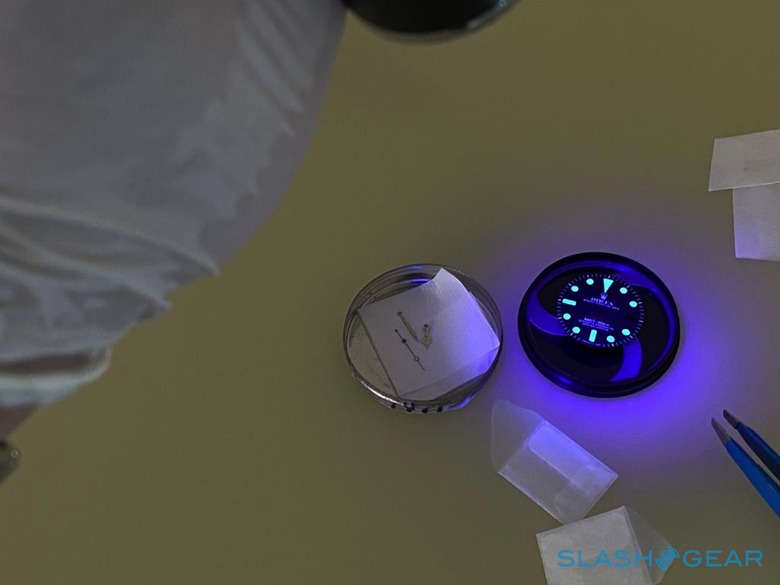
Even so, mine was to be only the second dial restored using Tritium. After poring over photos of James' handiwork, I knew I had to take the risk. Ron demonstrated his expertise in carefully removing the dial and hands – including the incredibly thin and fragile hour, minute, and second hands – so that I could package it up and ship it to James' studio in Northumberland, UK.
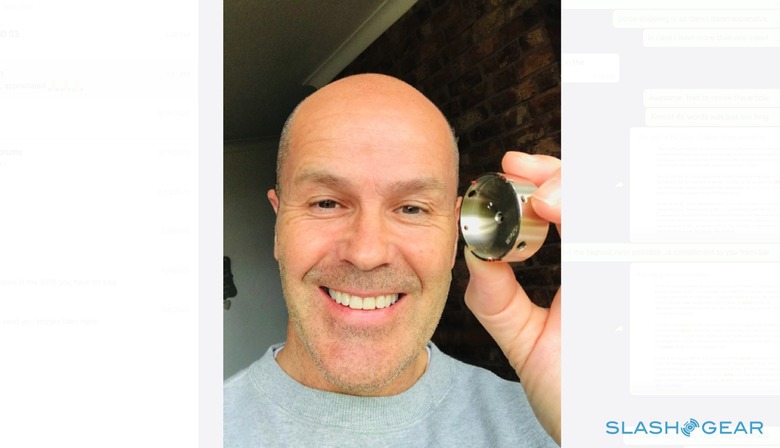
It took three days to deliver, and then two more for James to remove the old lume paint that had been applied and replace it with the authentic Tritium. Better still, it was a perfect job: each lume even and perfectly thin. Even the color matched what I had in my imagination, as did the hands. James even had an answer for getting the pearl in pearl to match the lumes color, carefully removing the old and replacing them with new Tritium.
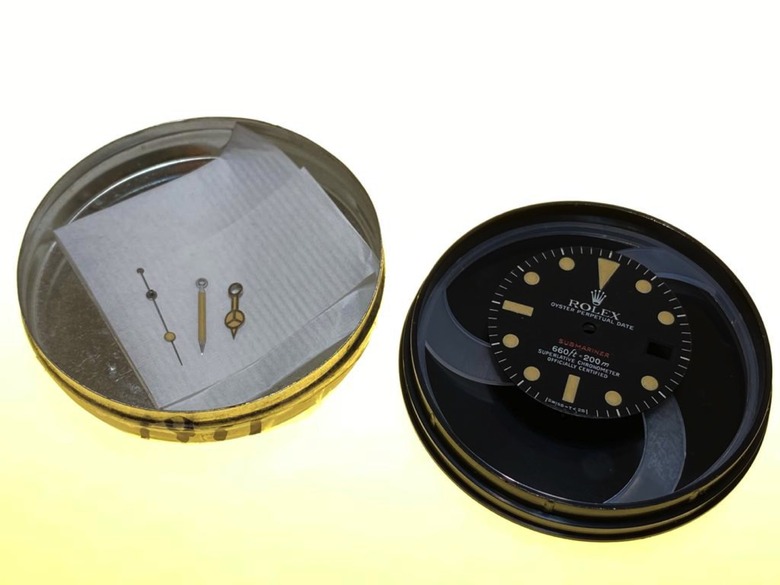
Wrist-worthy, or Instagram-worthy
Case polishing for vintage watches is controversial. Indeed, some frown upon it completely, preferring the naturally-aged look. All the same, I couldn't help but wonder what the watch would've looked like back in 1974, with a perfect case, period-correct chamfered bevels, and sharp edges along the bottom.
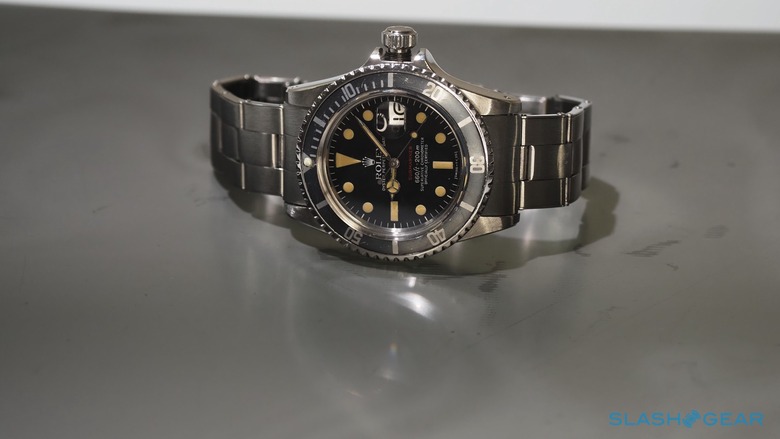
The Vintage Rolex Forums came to the rescue, and I ended up working with Michael Hui at Rolliworks. Fast-forward a little more than a week, and I got back photos and videos of the case and the C&I riveted bracelet from the '60s. The result? Period-perfect chamfers.
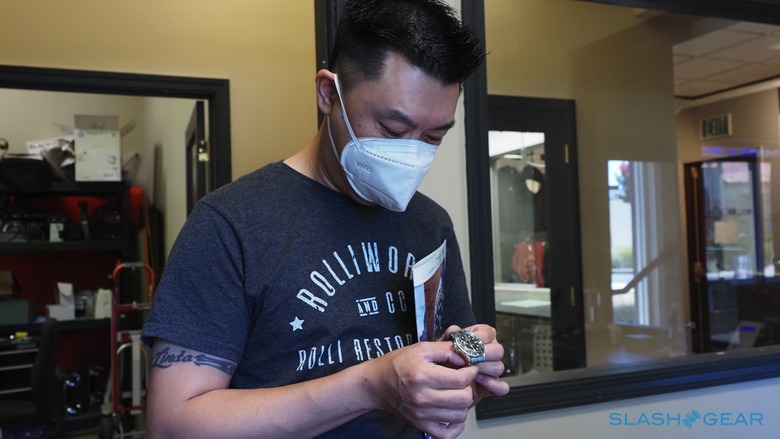
Here's a tip: if you send your case in for a full workup, specify whether you want it to be period-correct or overly exaggerated. The latter might look better on Instagram, but I think matching the original always looks better in person.
Time and wear had taken its toll on the casing, and what Michael had to work with. The lug at 5-o'clock, for example, is still thin: to make it match the other lugs, he'd have needed to laser weld more material on, a process both time-consuming and expensive. Instead, we prioritized filling in the deeper scratches, and adding material to sharpen the edges at the bottom of the case.
Restoring the bracelet
As with the bezel insert, my tolerance for period-correctness went out the window with the bracelet. For a start, I love everything about the first generation Oyster bracelet, which uses lightweight rivets to hold the links together. Secondly, since bracelet style comes down to individual taste and preference, it's less of a commitment to pick the one that works best for your lifestyle since you can more easily swap them in and out later on.
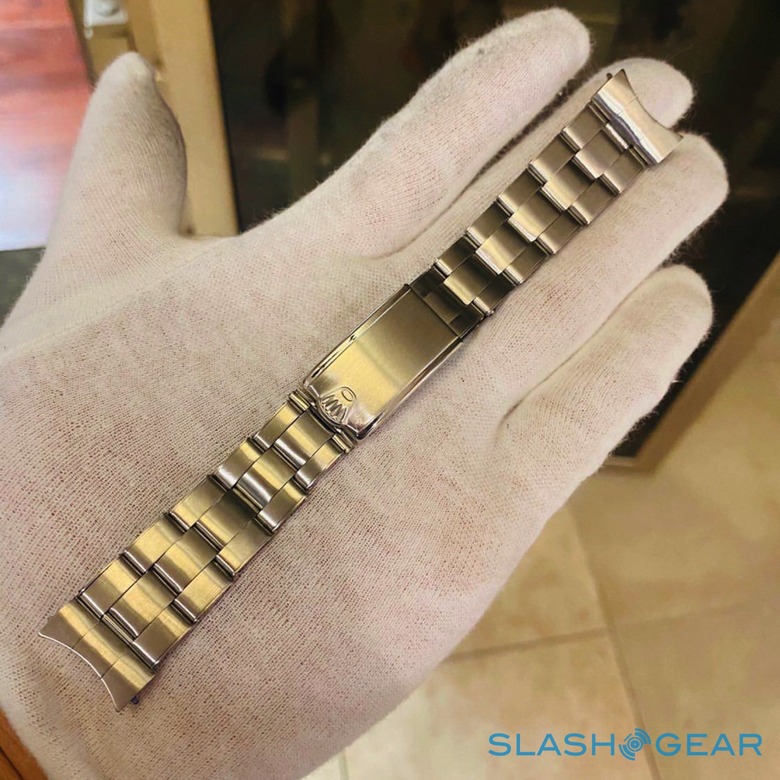
The early days of buying Rolex watches from Rolex Authorized Dealers was pretty much the wild-wild-west. Unlike when you purchase a modern Rolex today, there was far more flexibility in the type of bracelet offered, such as an Oyster or Jubilee.
The bracelet model number 9315, with folded links with either 280 or 558 end links, would have been the correct one for my Rolex 1680 Red Submariner with a 3.8M case number. Unfortunately the original had gone missing over the years. Saying that, even those owners who still have their original bracelet, the consensus among collectors is that they've usually upgraded to the newer and sturdier 93150 bracelet for actual day to day wear.
Ron happened to have an old and fairly tired looking circa-'73 riveted bracelet, and I managed to find one of the very last 1974 blades for the buckle to match the watch year. While I'd originally planned not to have it polished, Michael recommended some light work to "freshen" it up, and better match the newly polished case. It was a lesson in trusting the experts, as he went above and beyond in bringing it within a hair's breadth of what it must've been like when brand new.
When you're restoring, it's all about who you trust
The biggest takeaway from this entire process is that you need to know precisely what outcome you're looking for. Equally important, you have to clearly articulate what you want in order to get what you want.
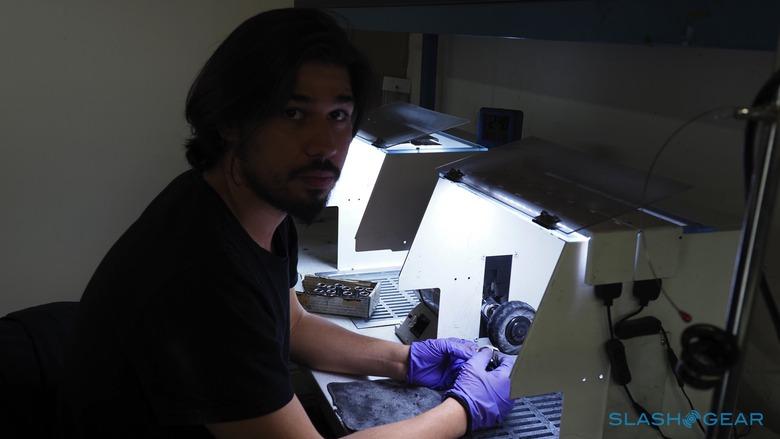
While it might seem like common-sense, for a vintage restoration I'd never send my watch to a Rolex Service Center, and nor would I trust one watchmaker to do everything from restoring the movement, reluming the dial, and polishing the case and bracelet. Each stage could contain a career's-worth of training and talent on its own, and no single person could rightly consider themselves a master of all.
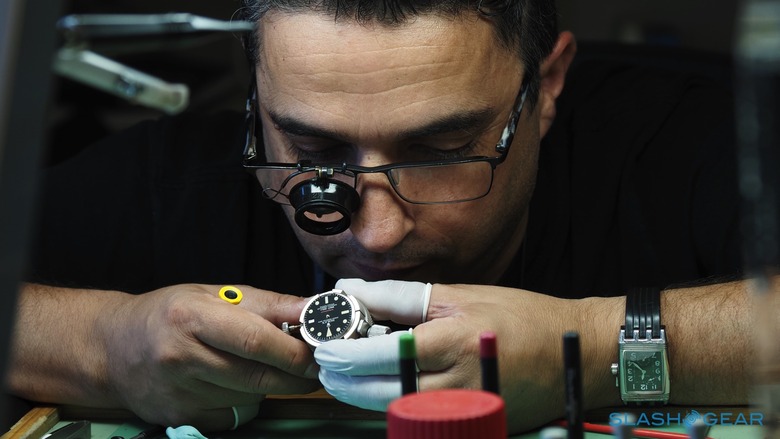
To my mind, the value of a boutique shop like Rolliwork is that gathering of expertise. Even though they're a one-stop-shop for a restoration, the individual specialists weigh in on each step of the process. Luca lives and breathes polishing cases, while Michael is the master at restoring bracelets. Then there's Sal, the watchmaker, who handles disassembling and reassembling the watch after his teammates' work finishes.
The sum of the parts: Reassembling everything
After months of what felt like holding my breath, and years of searching before that, all of the components were restored and ready to be pieced back together. I made the trip out to San Jose to meet the Rolliwork team and document the process, as they brought their combined 60+ years of experience to bear.
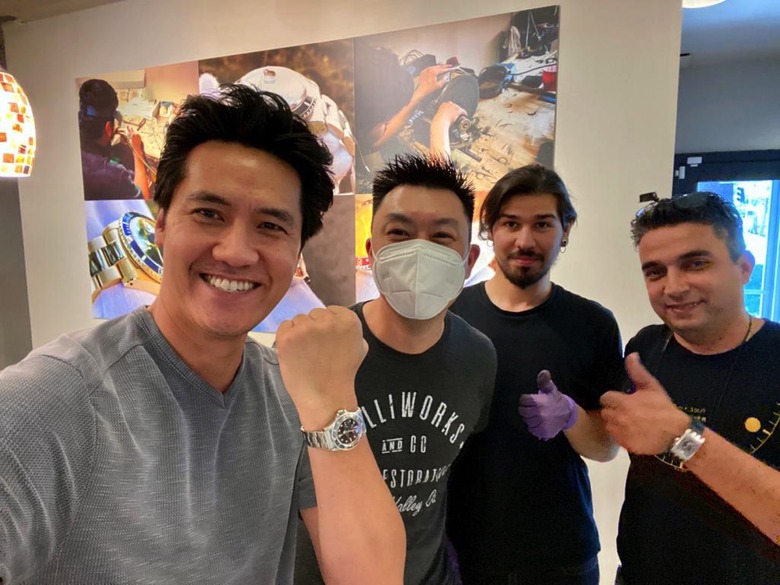
Slowly, carefully, tiny pieces became a beautiful timepiece once again. "This is the best relume dial I've ever seen in my life," Sal told me, as we examined James' handiwork under a super-high resolution microscope, "and it's on par or better than what you'd expect to see leaving the Rolex factory."
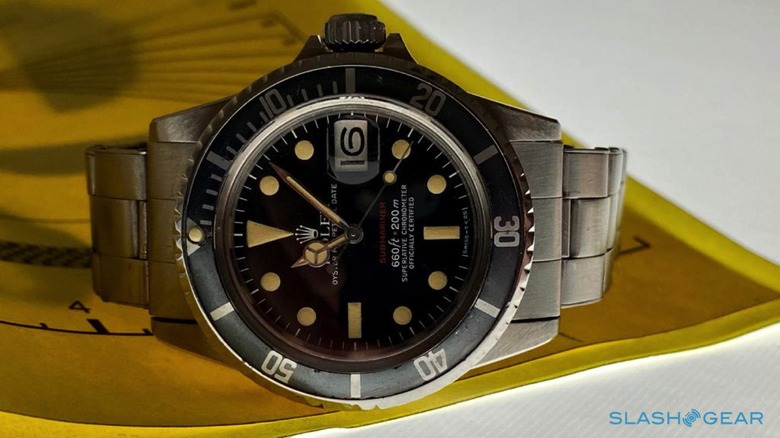
As processes go, watch restoration isn't a quick one, a stress-free one, or an inexpensive one. You could also make the argument that, with the rise of smartwatches, the place of the mechanical timepiece is shrinking in relevance too. Having had the rare opportunity to look over the shoulders of a talented watchmaker and a group of experts as they brought my Red Sub back to life, however, there's no doubt in my mind that the journey was worth it.
